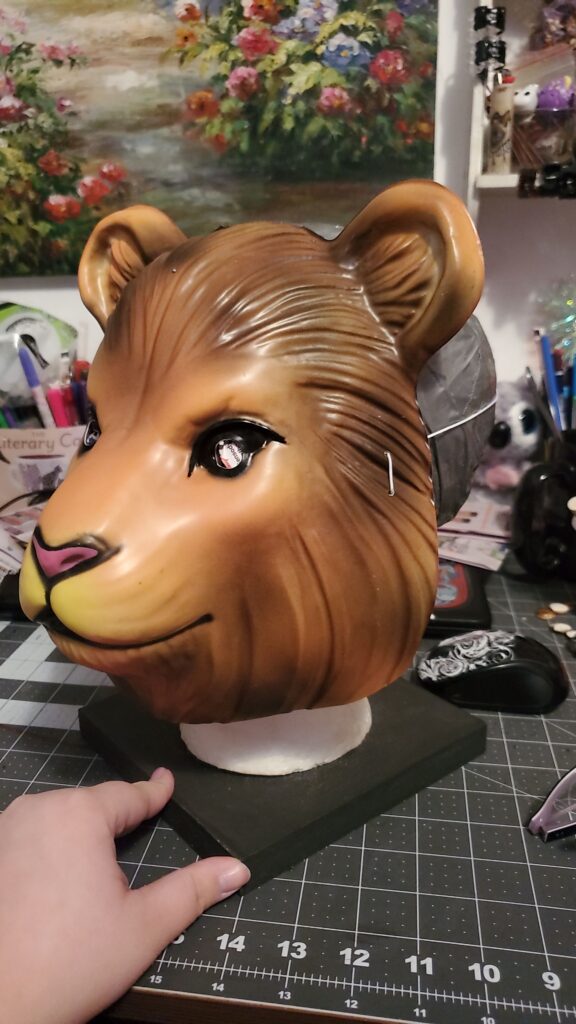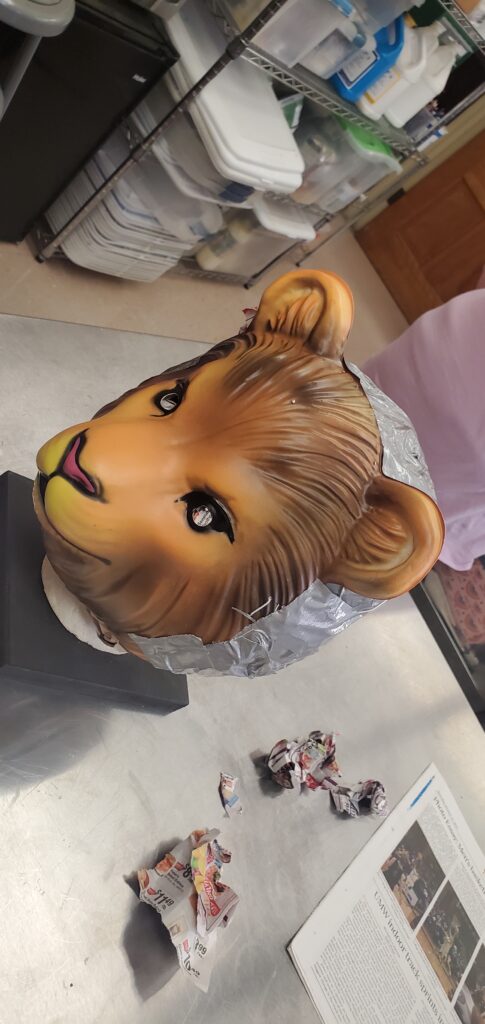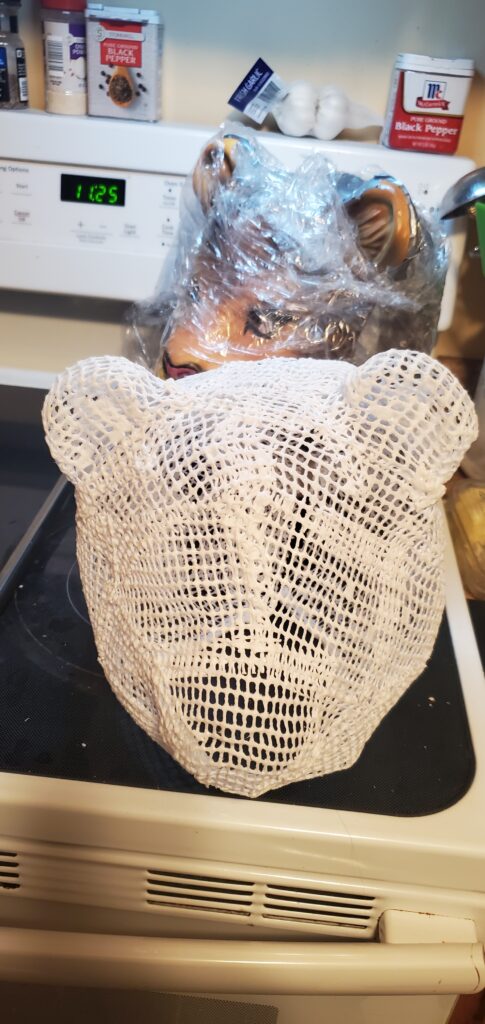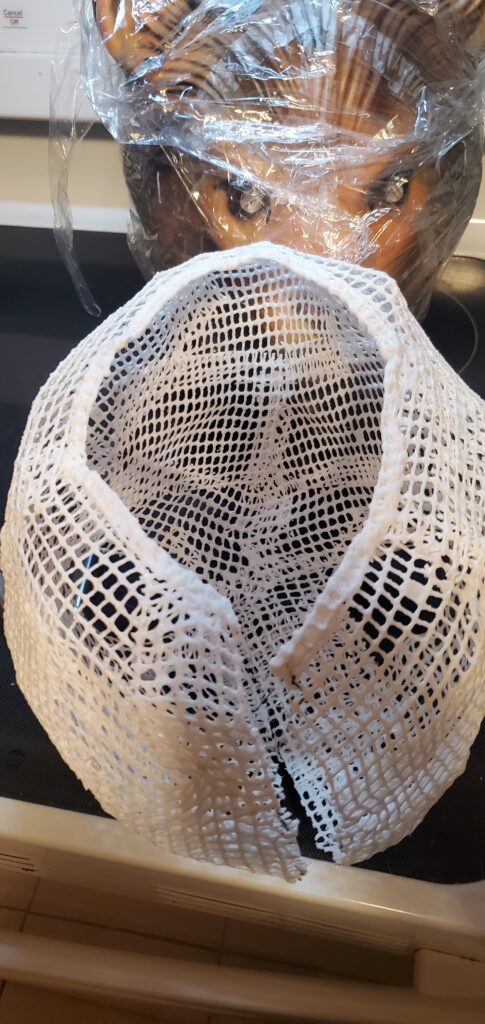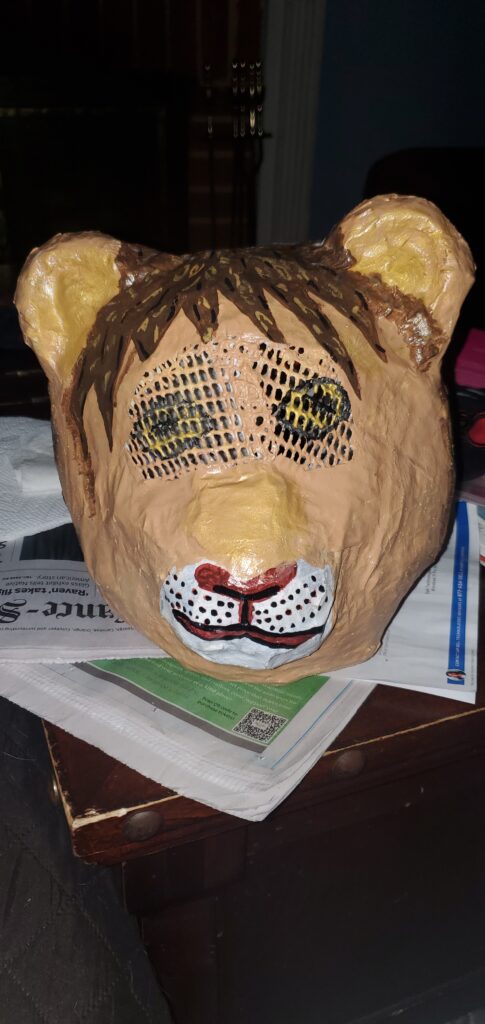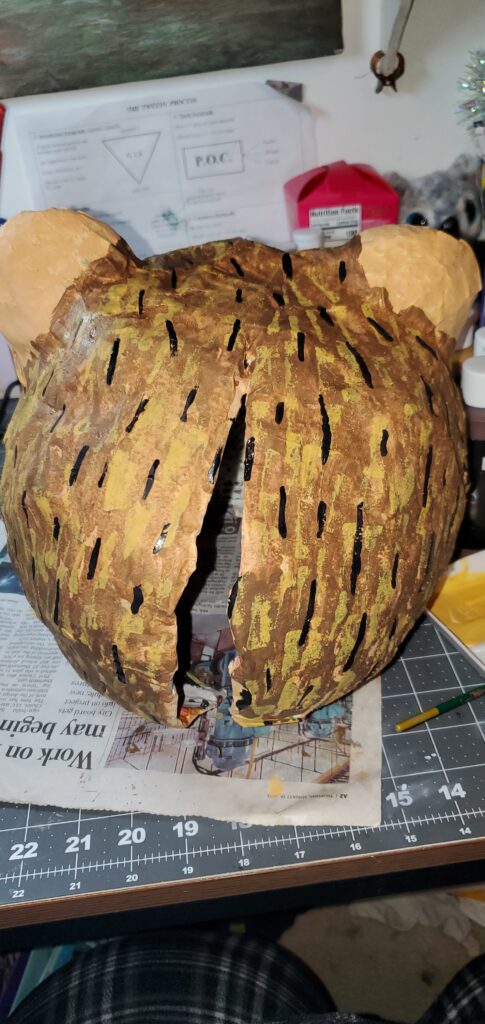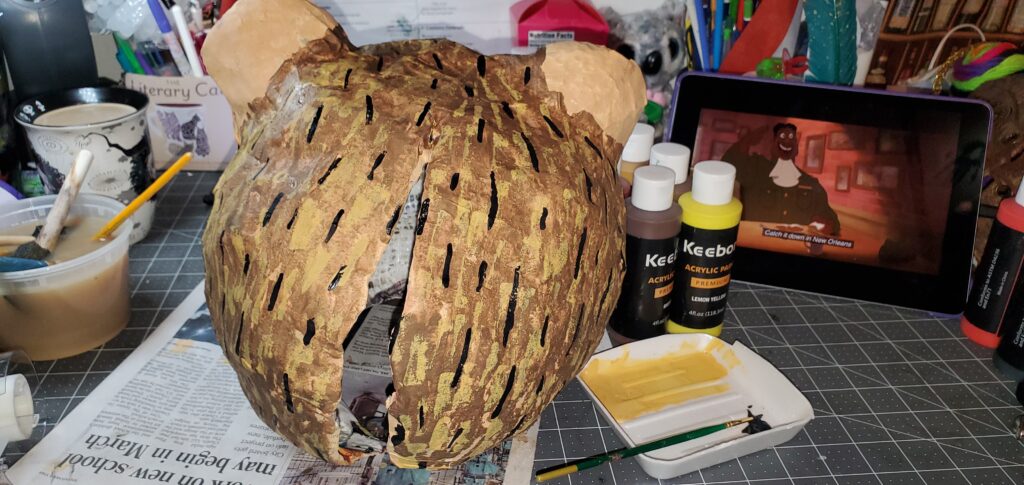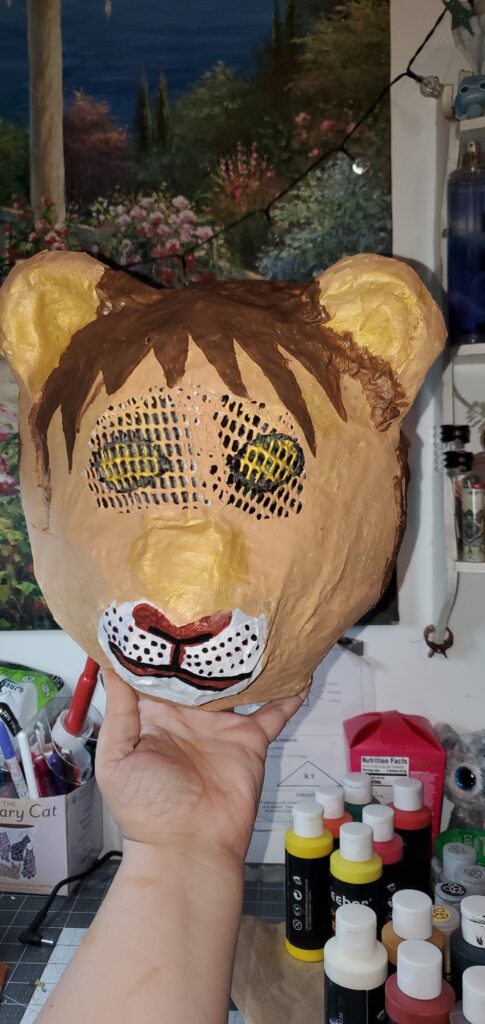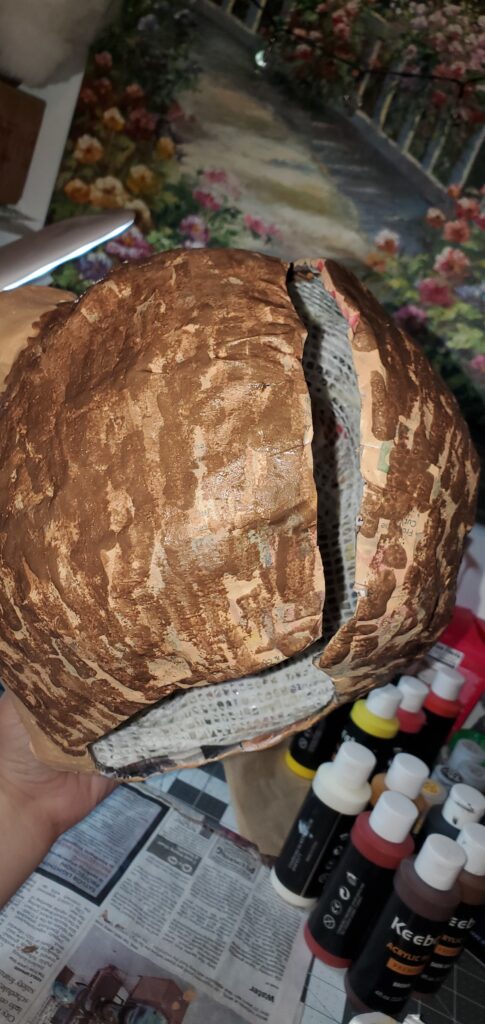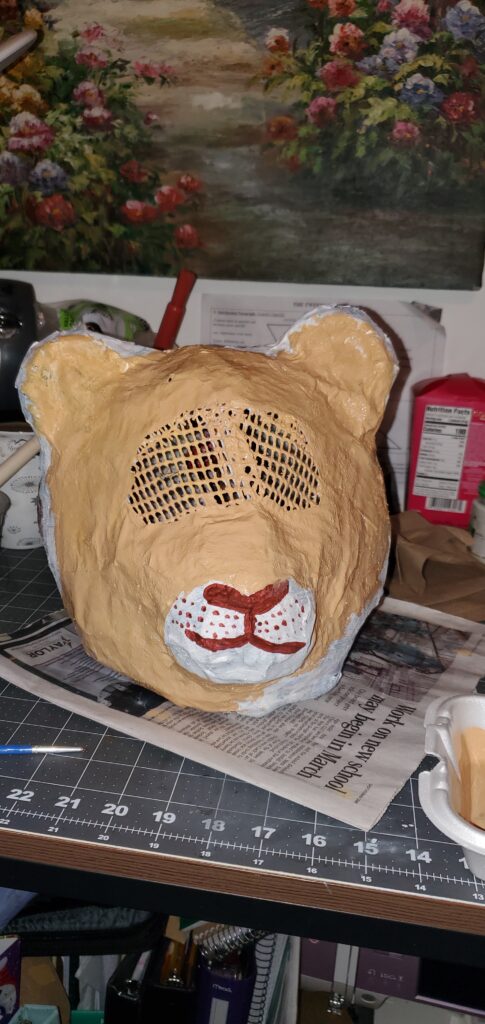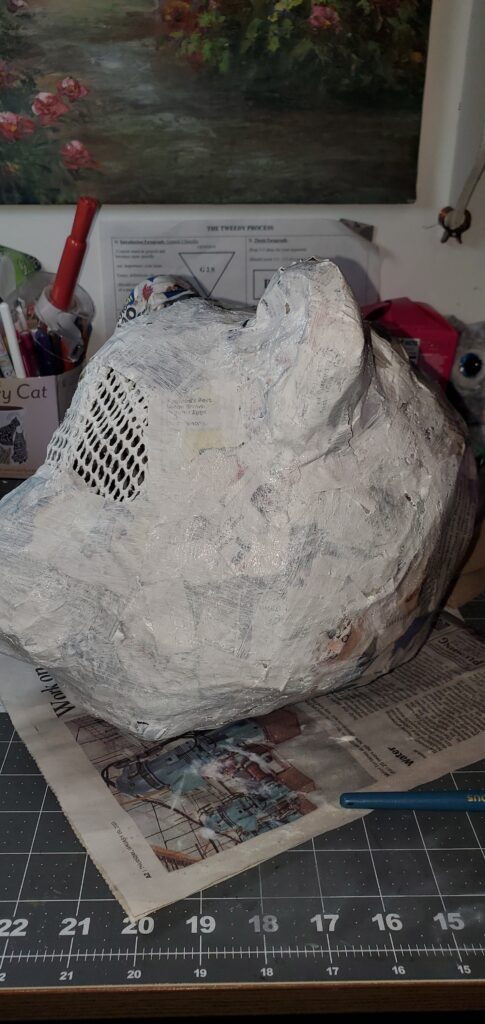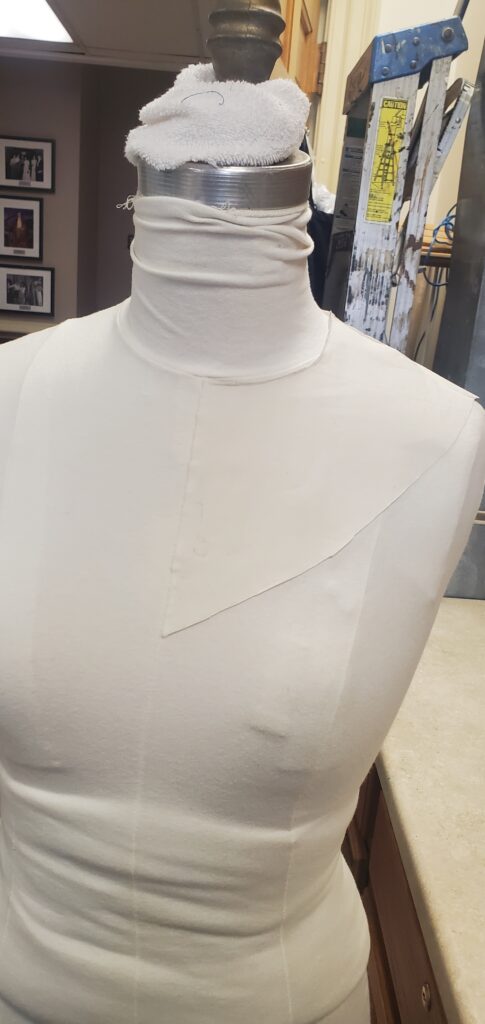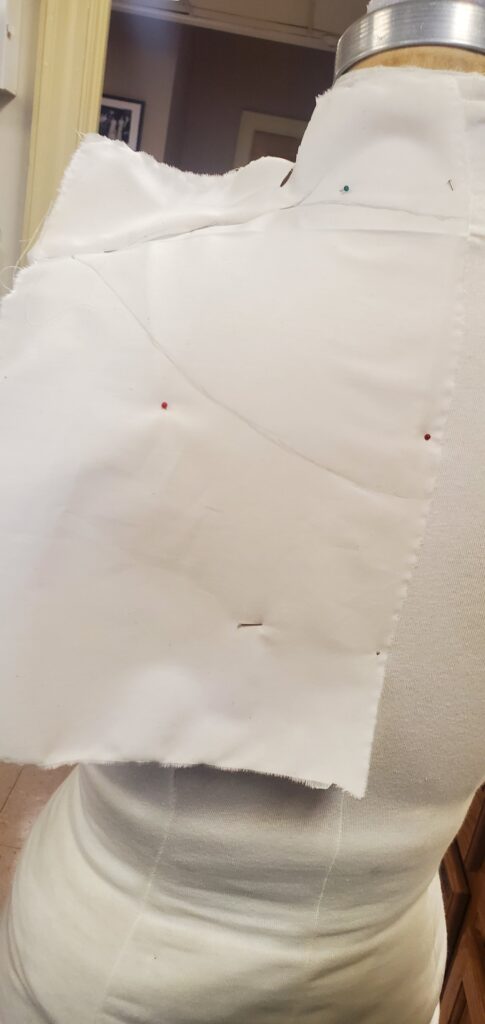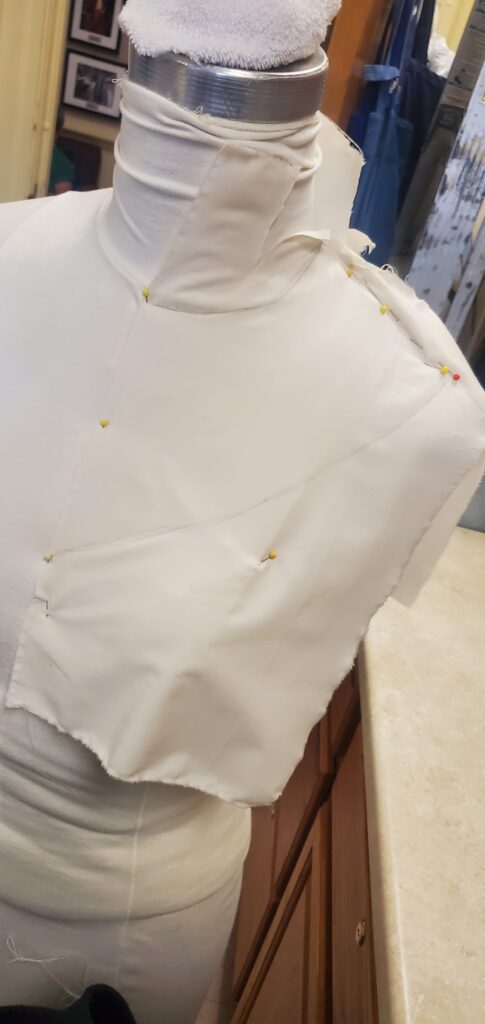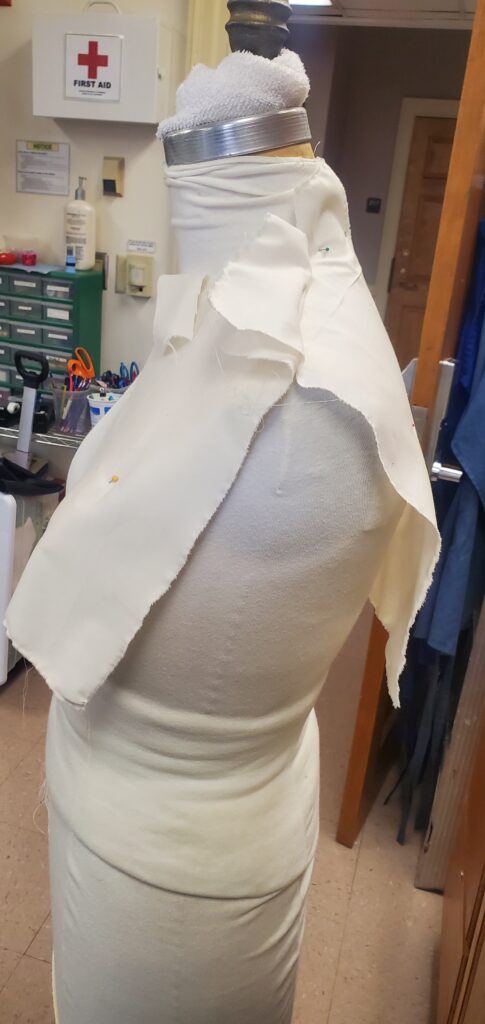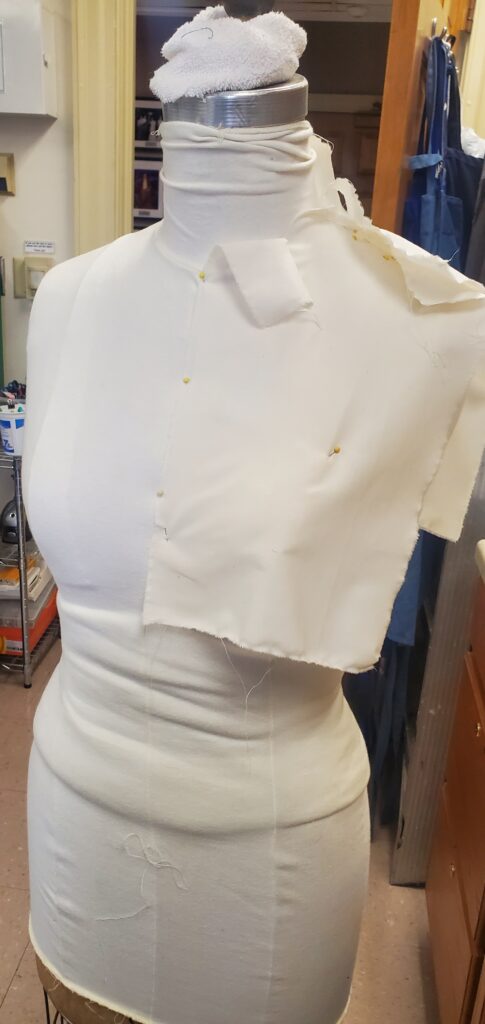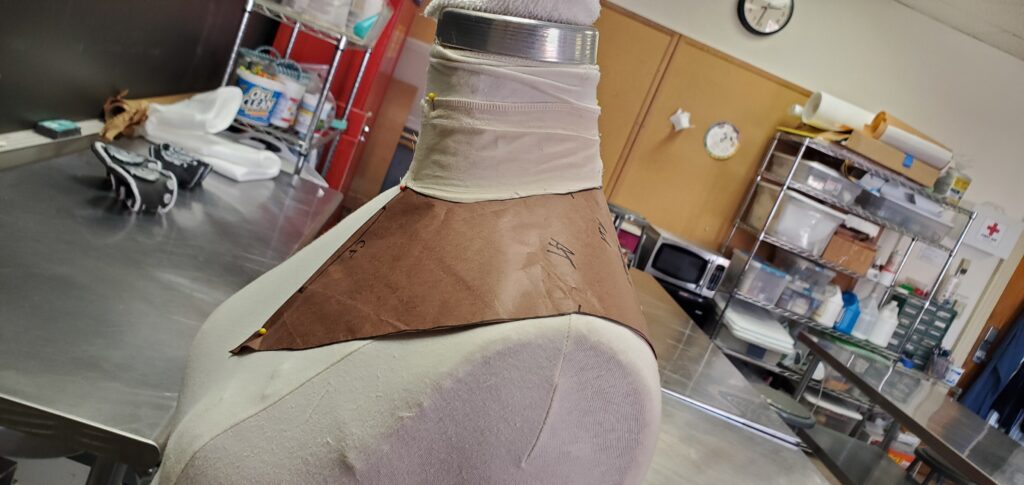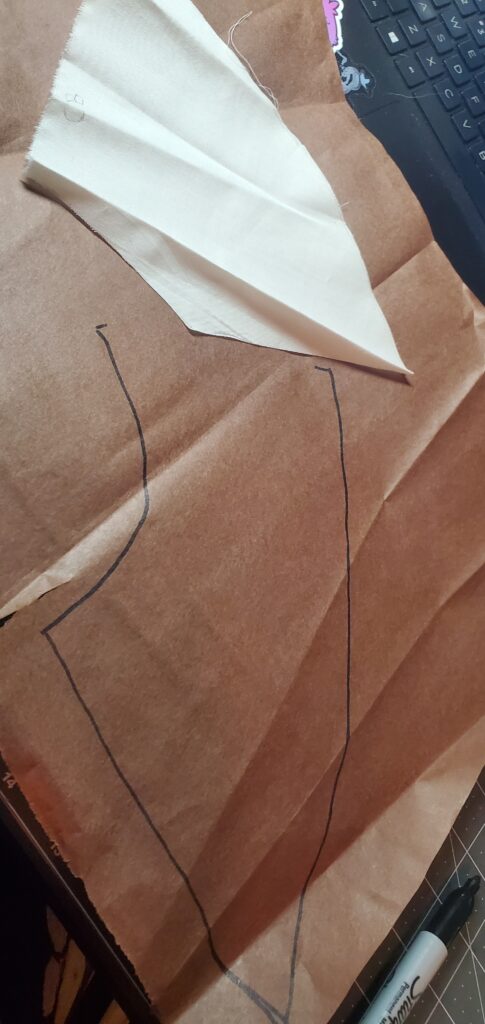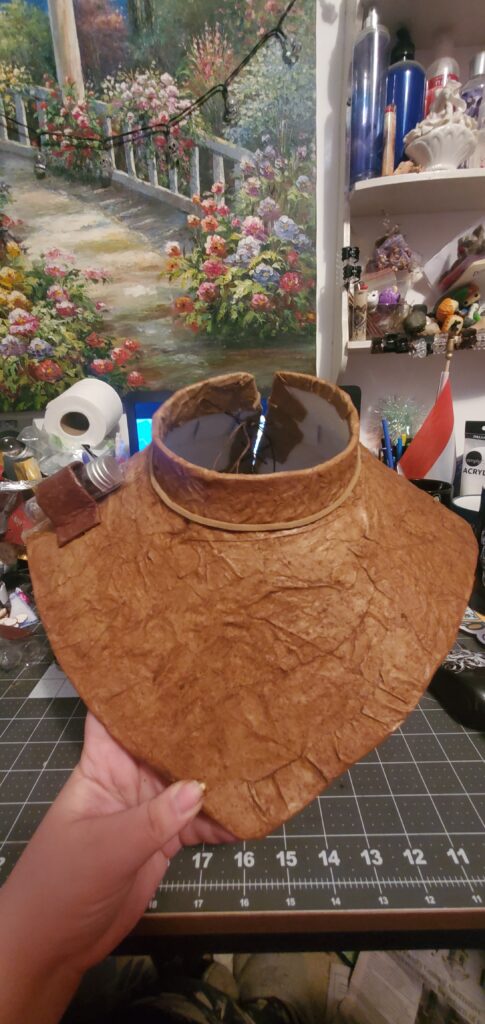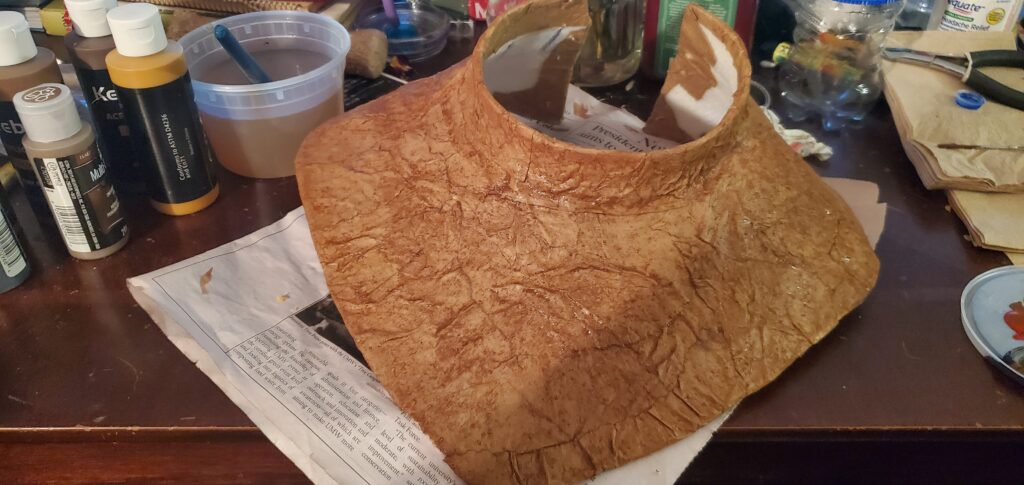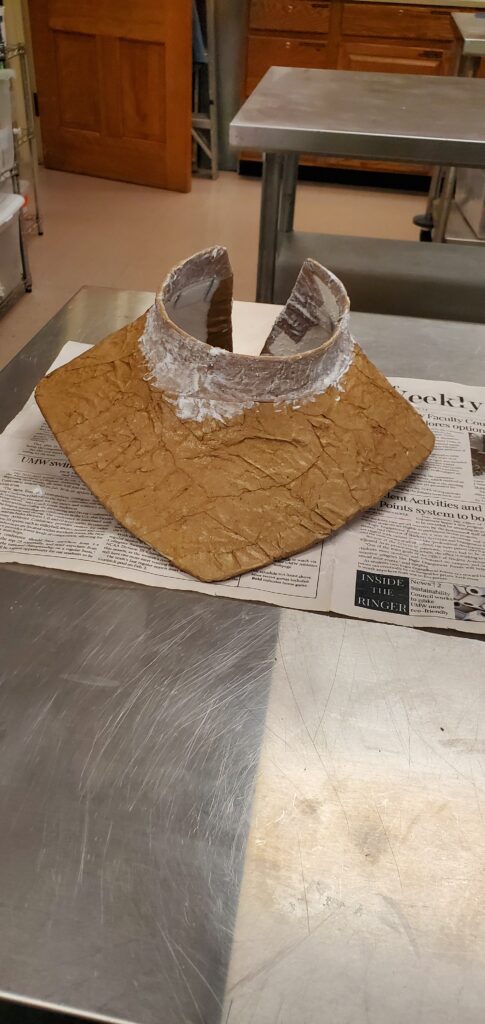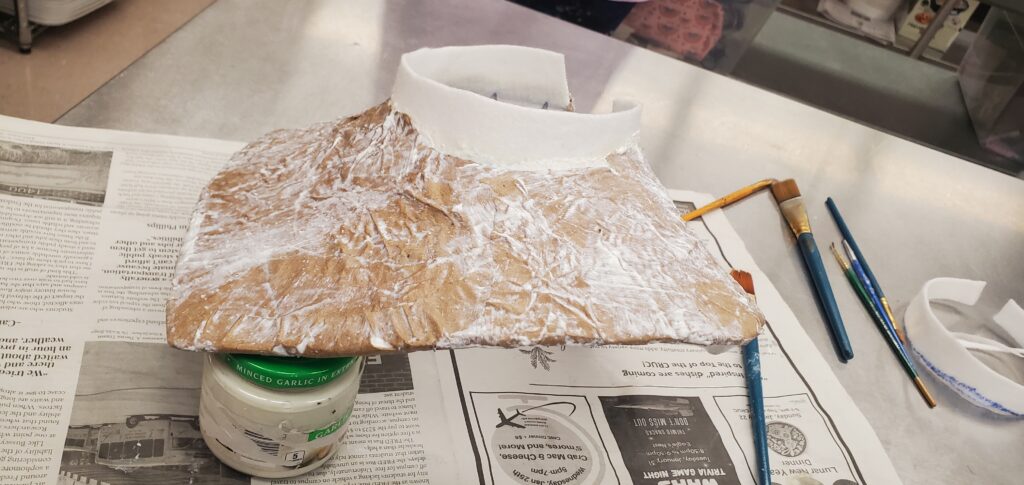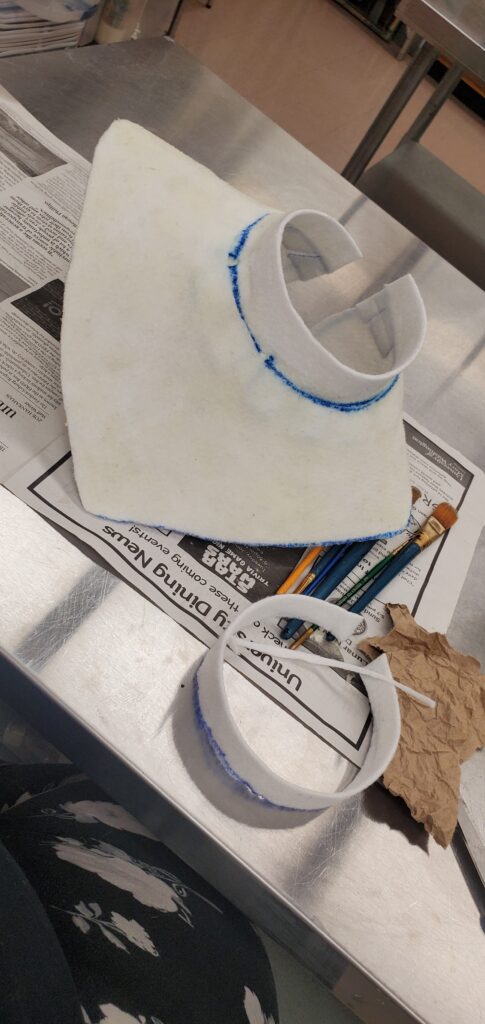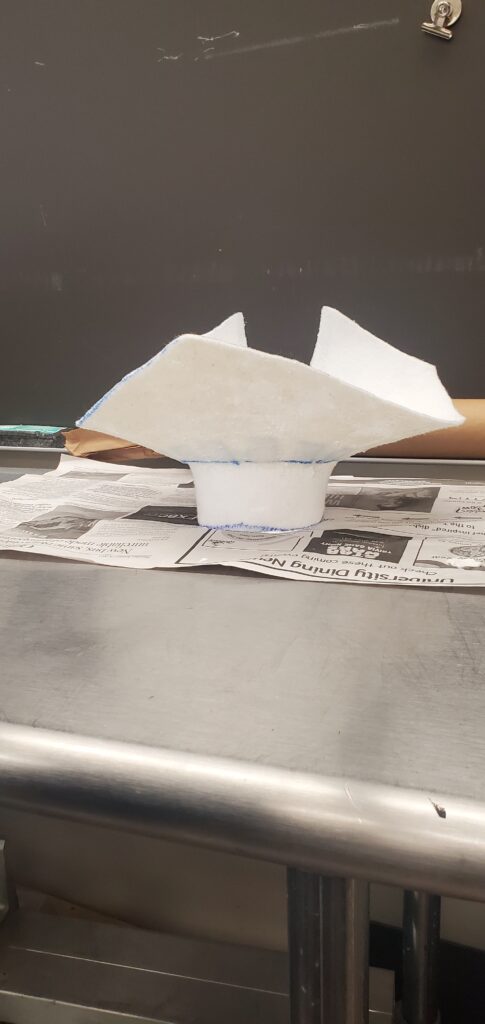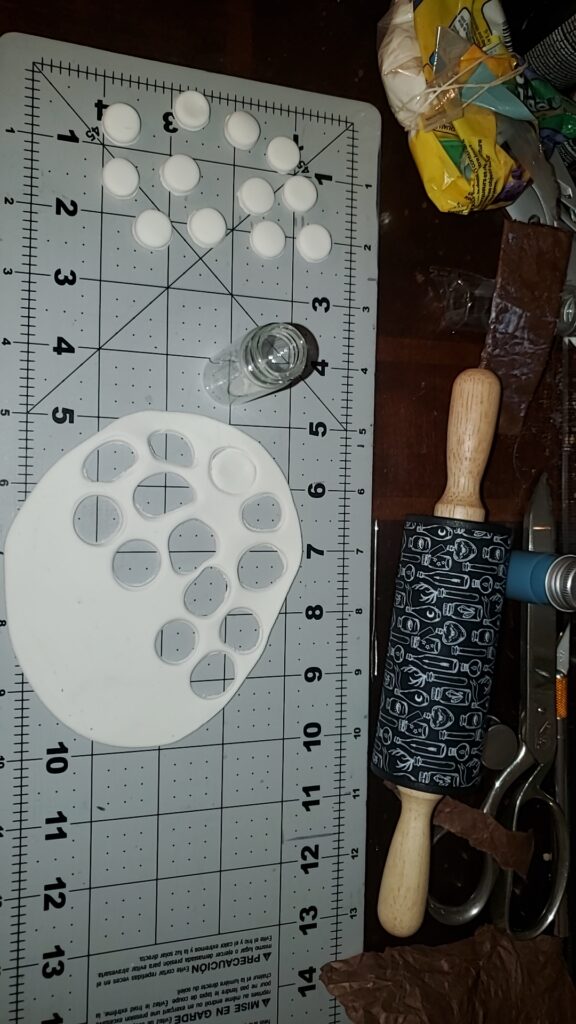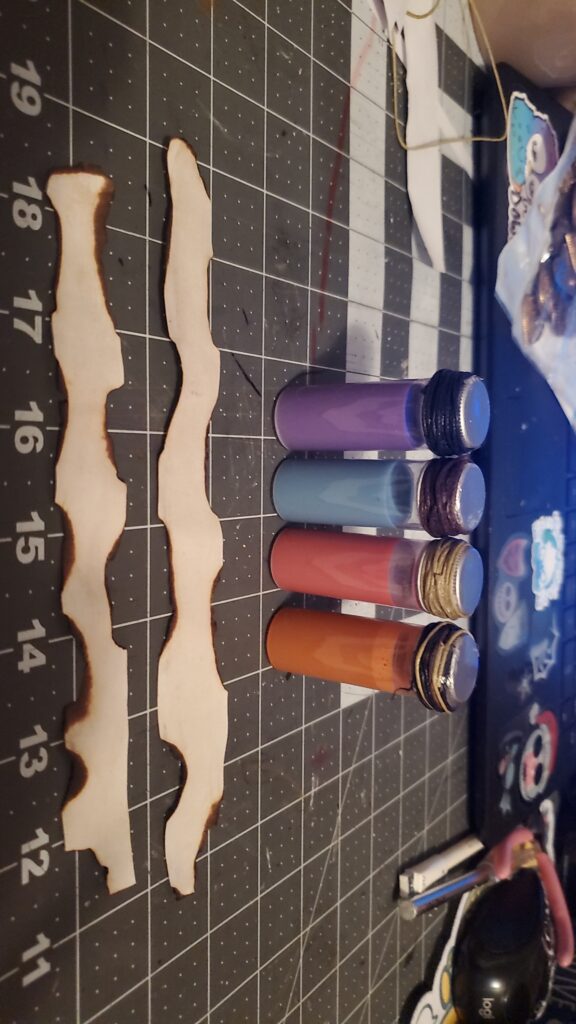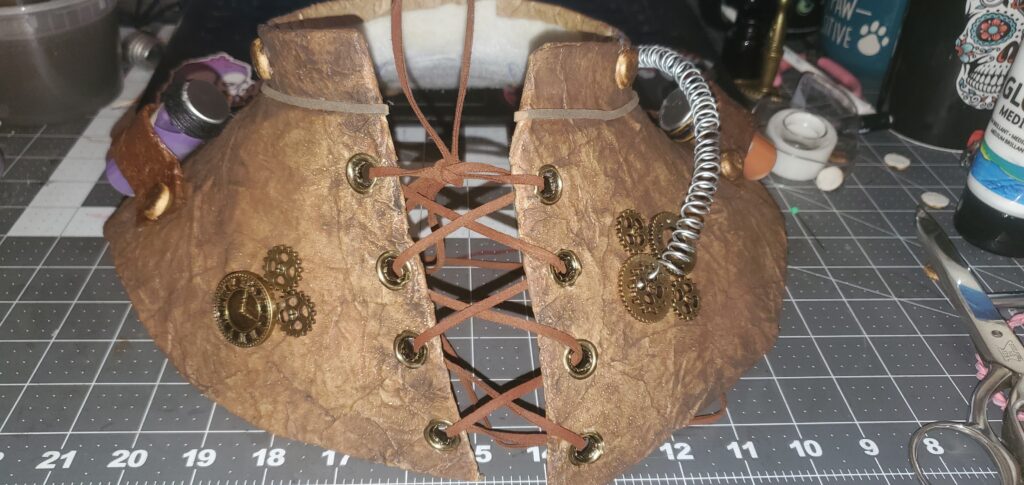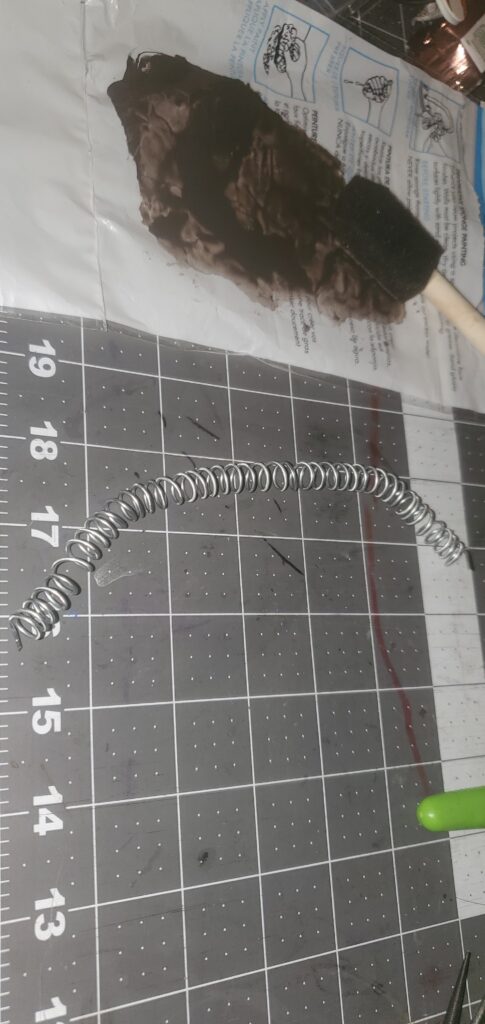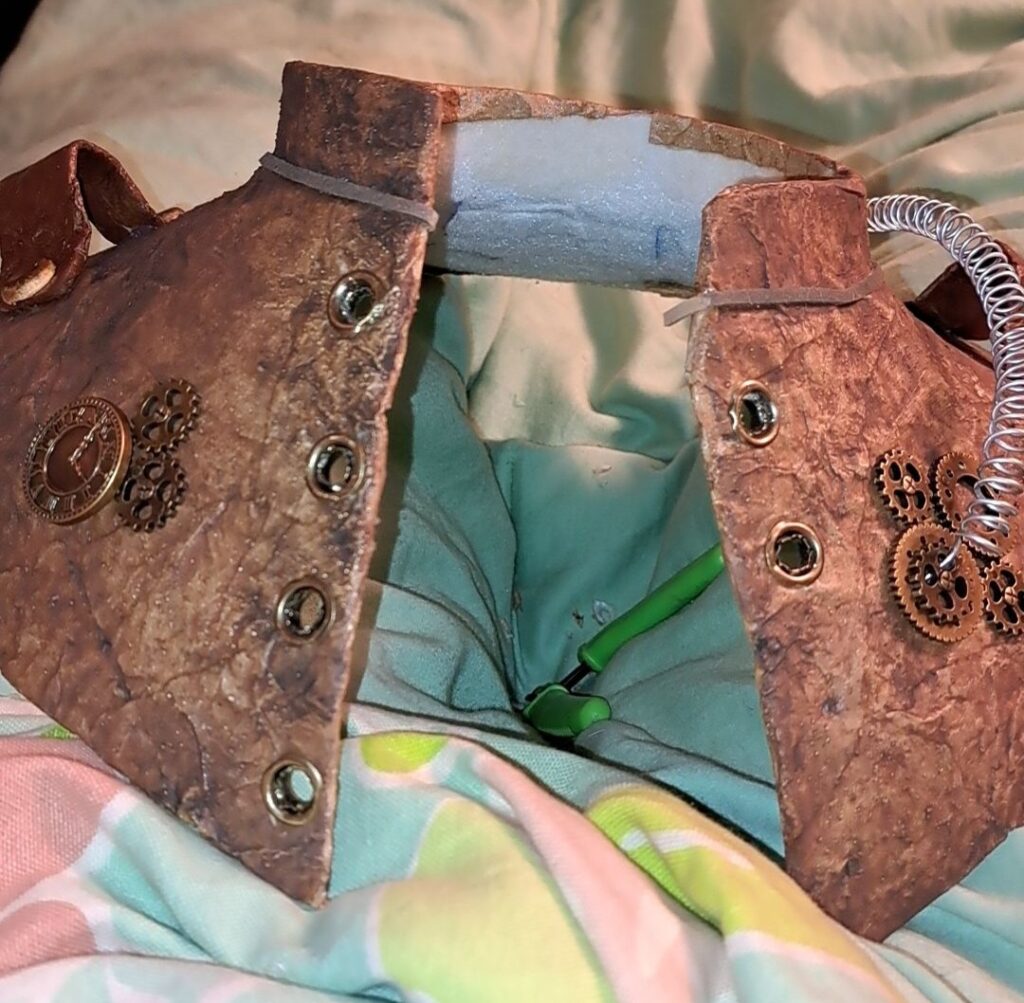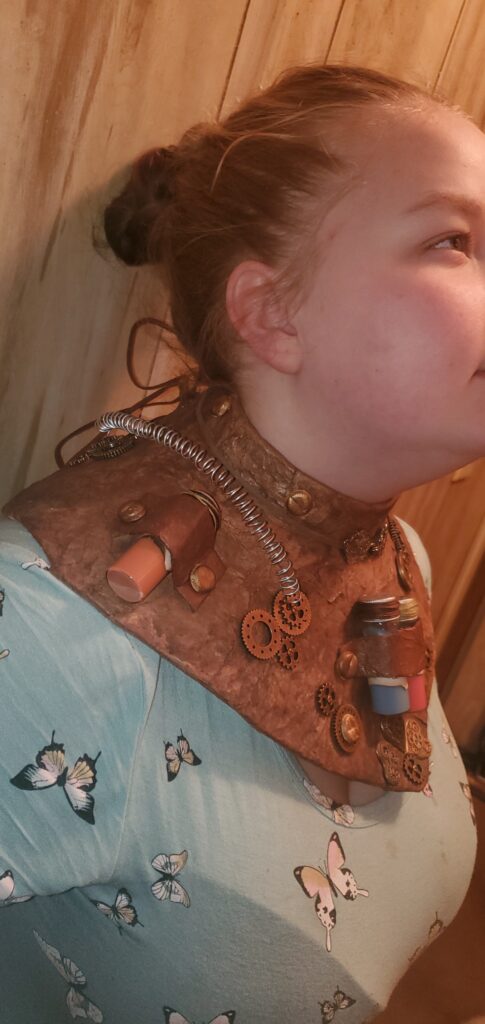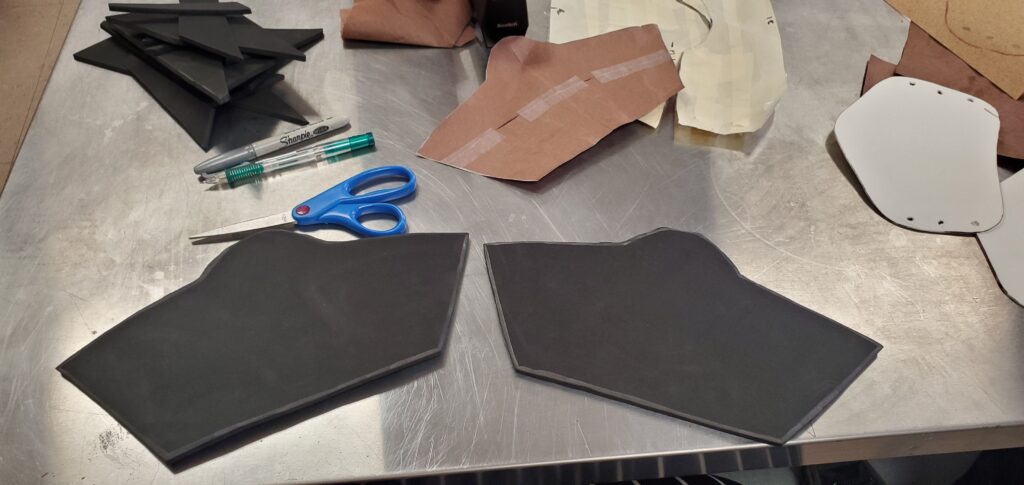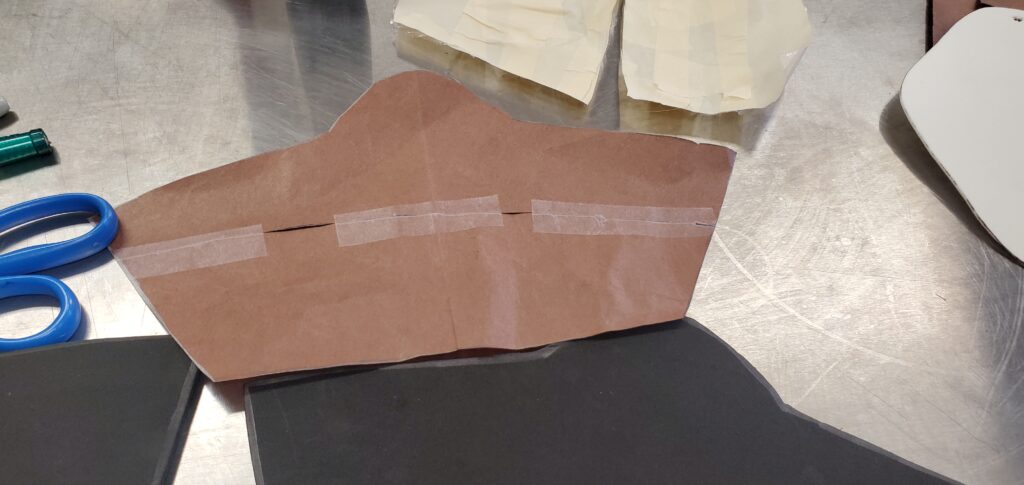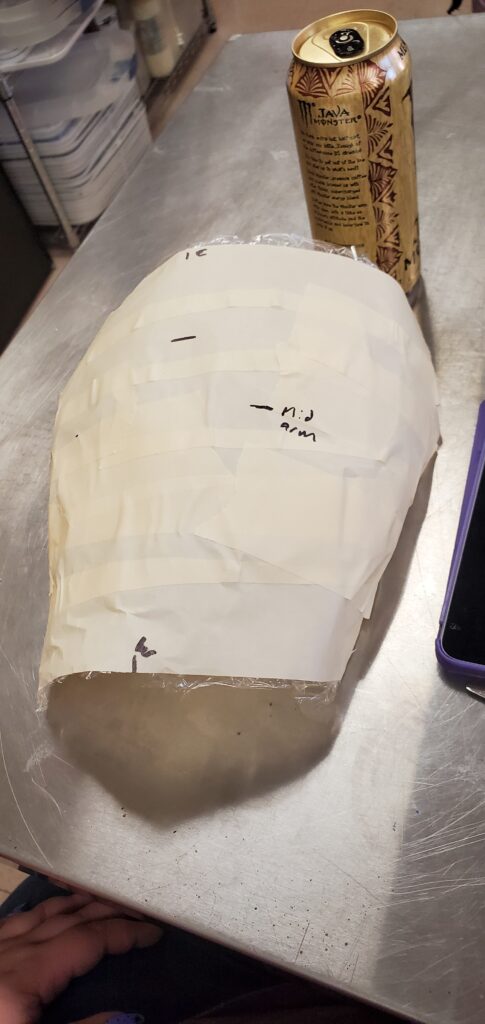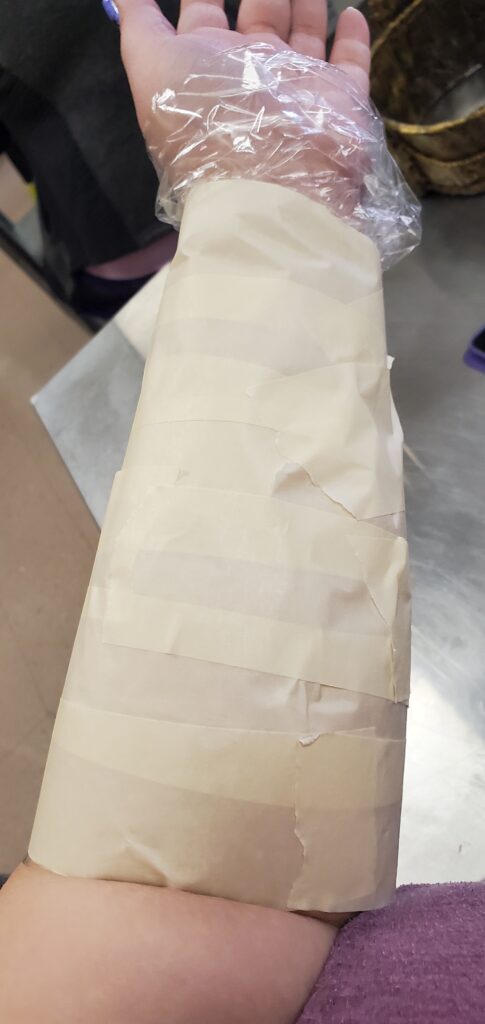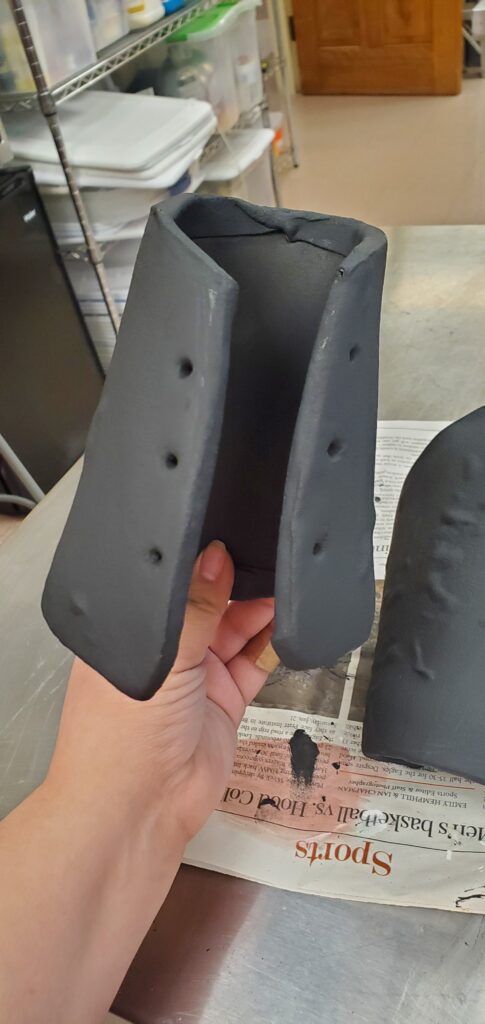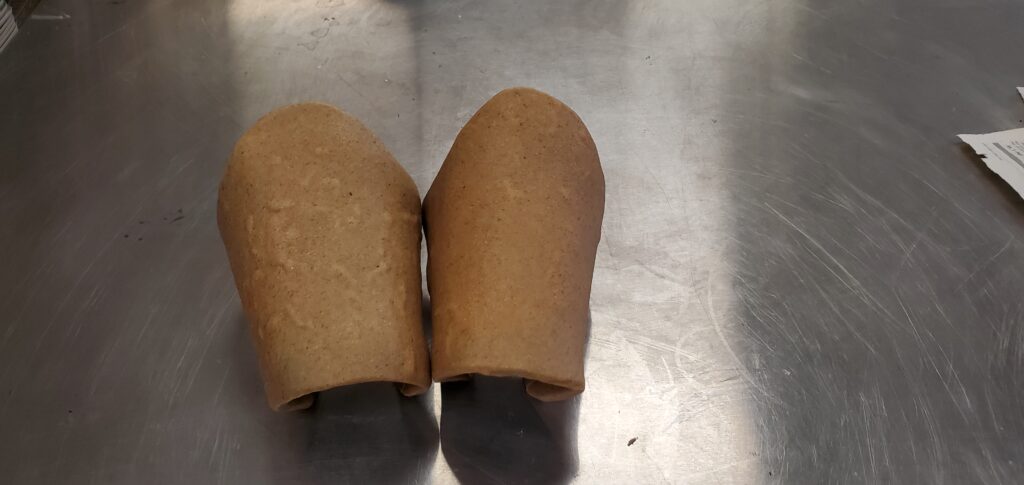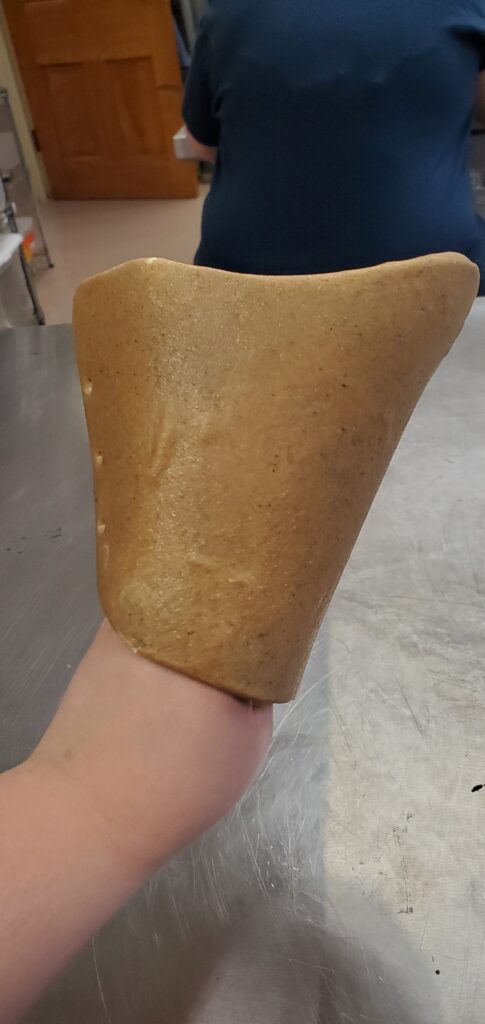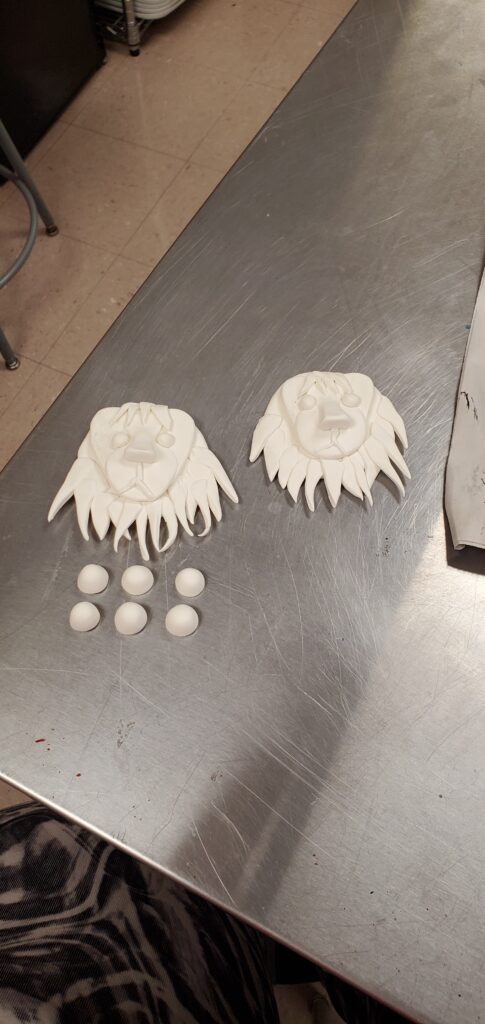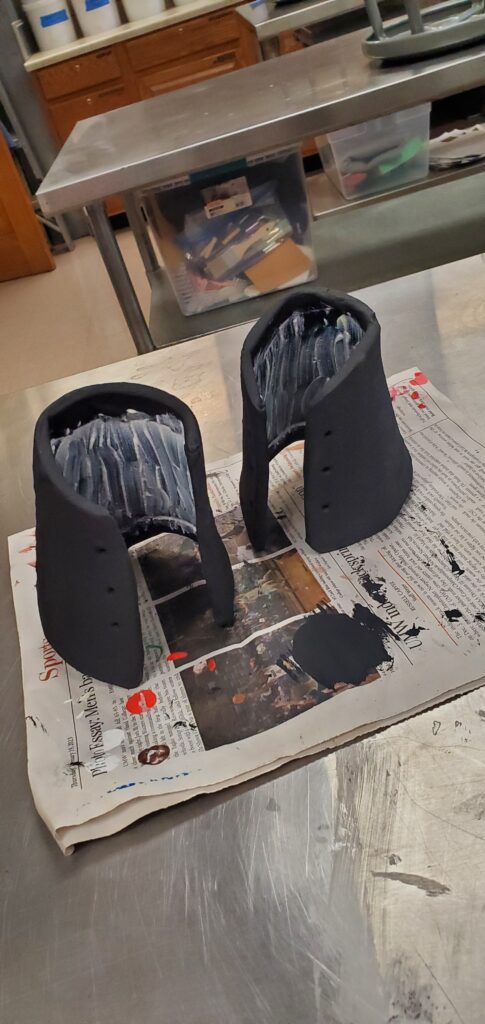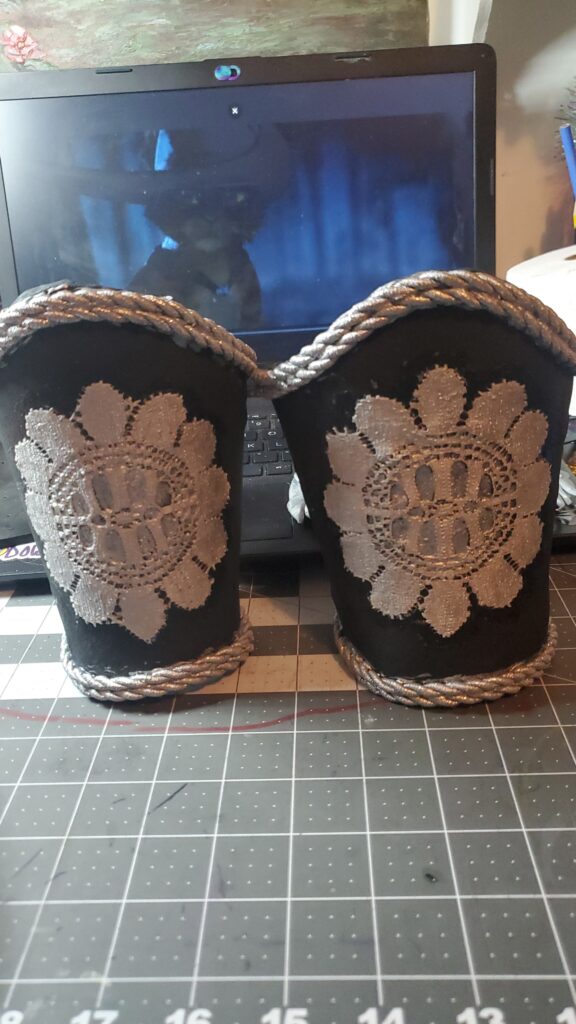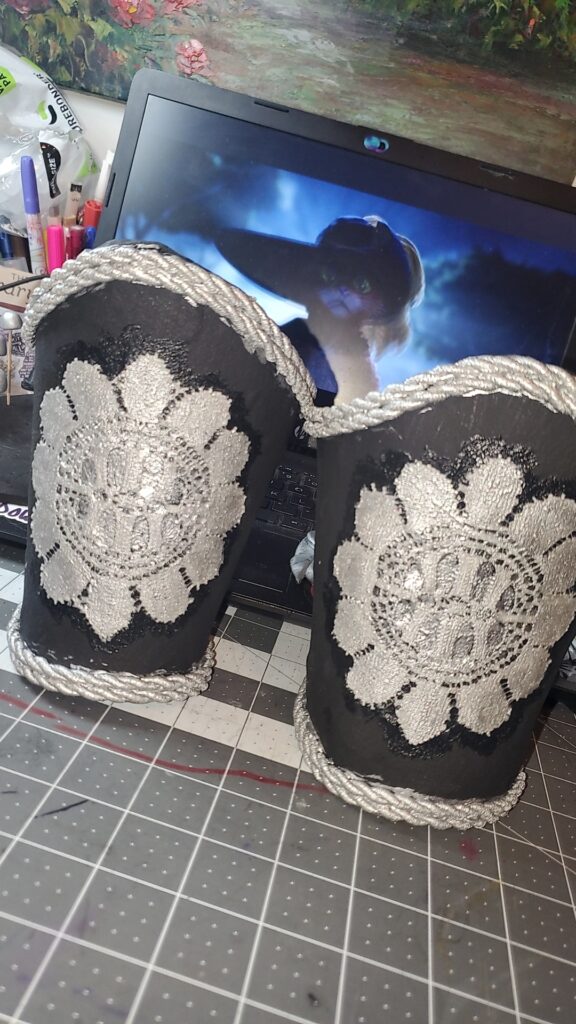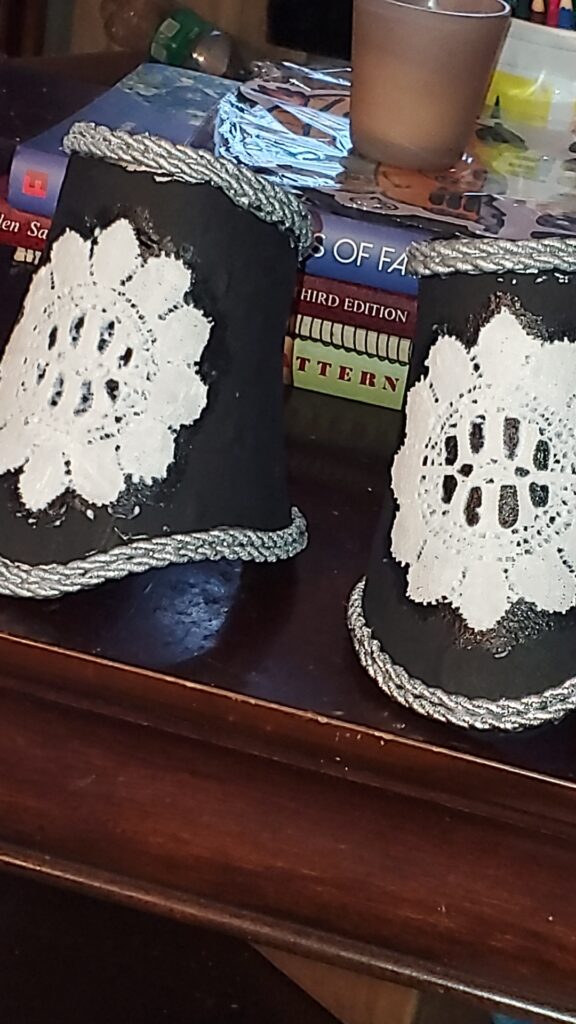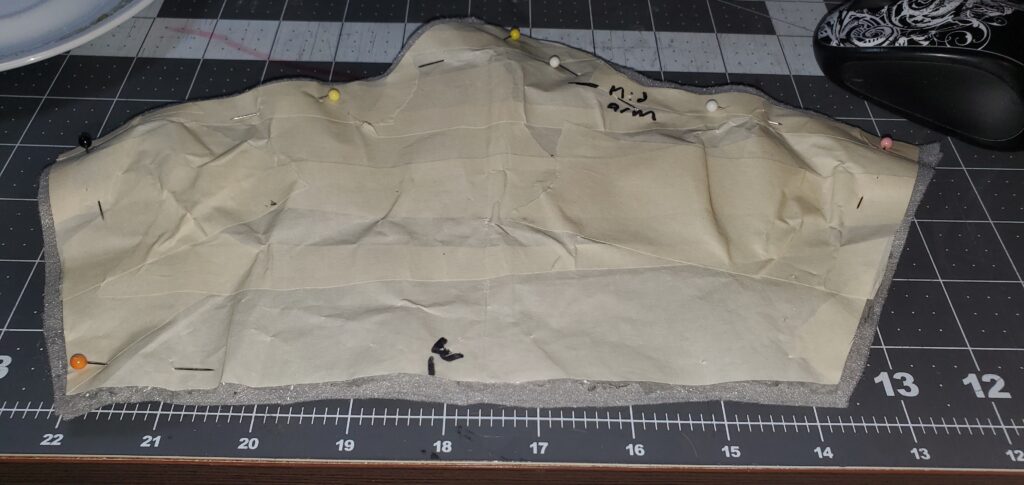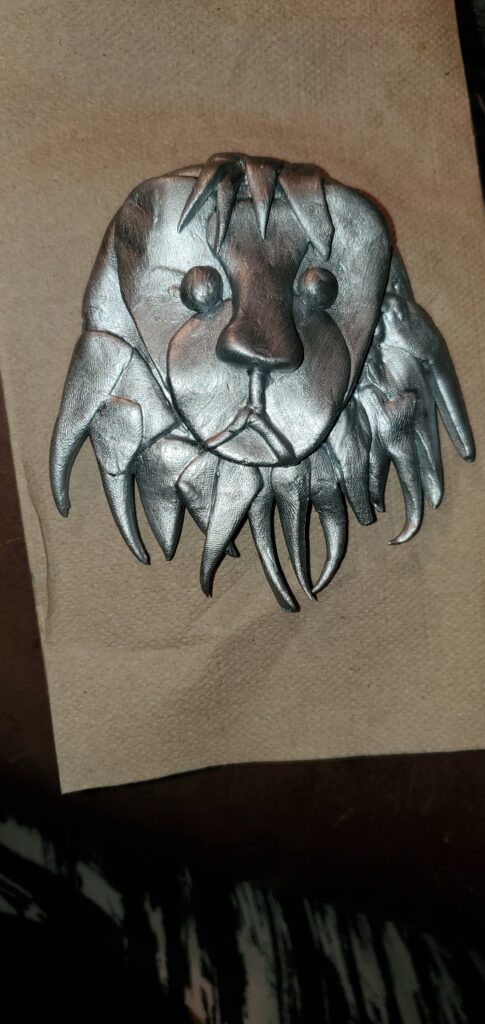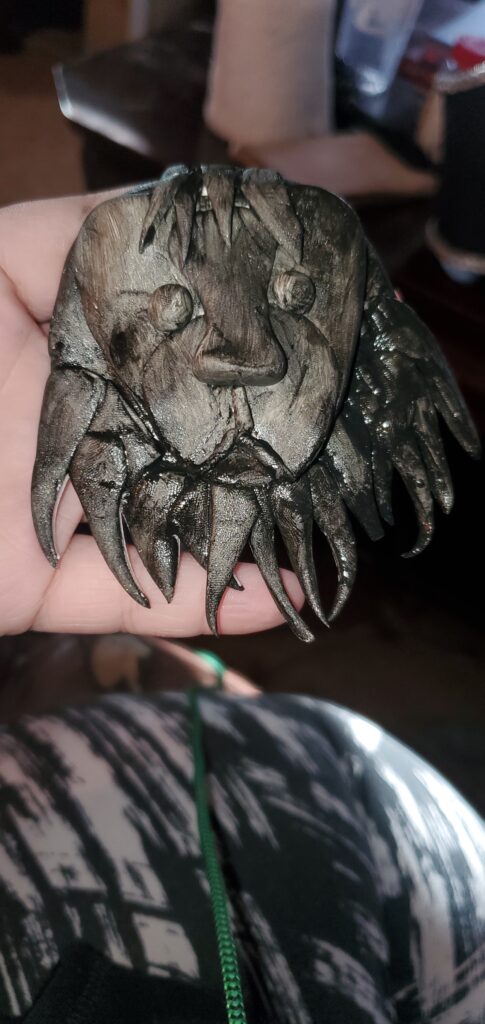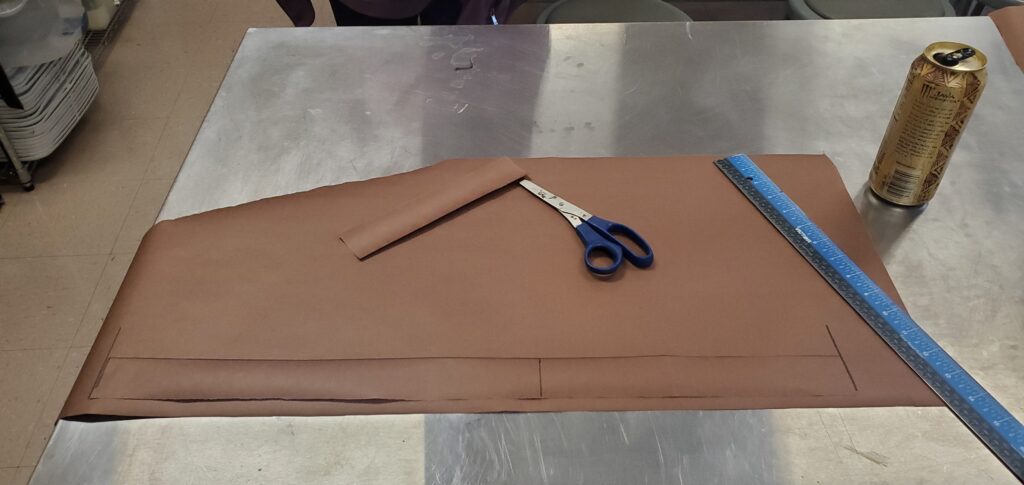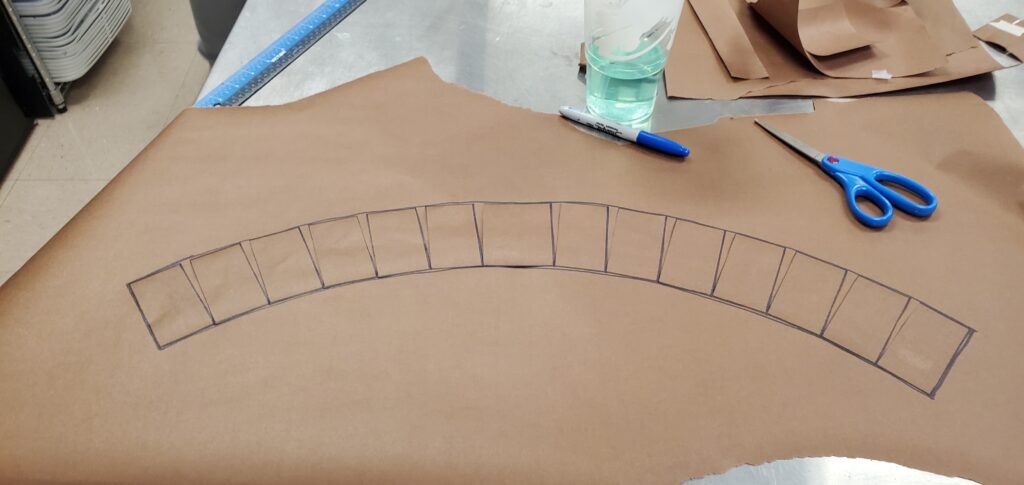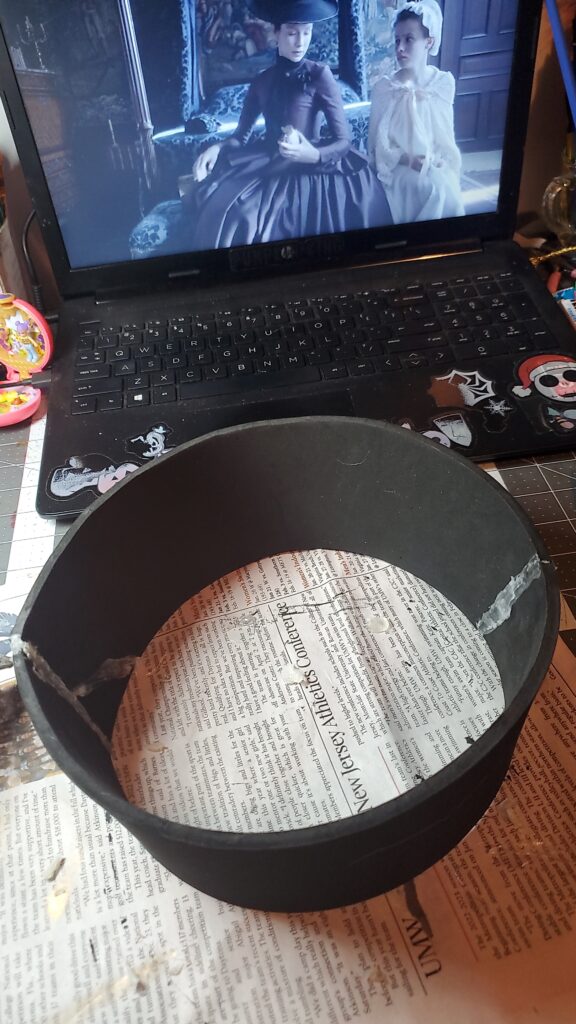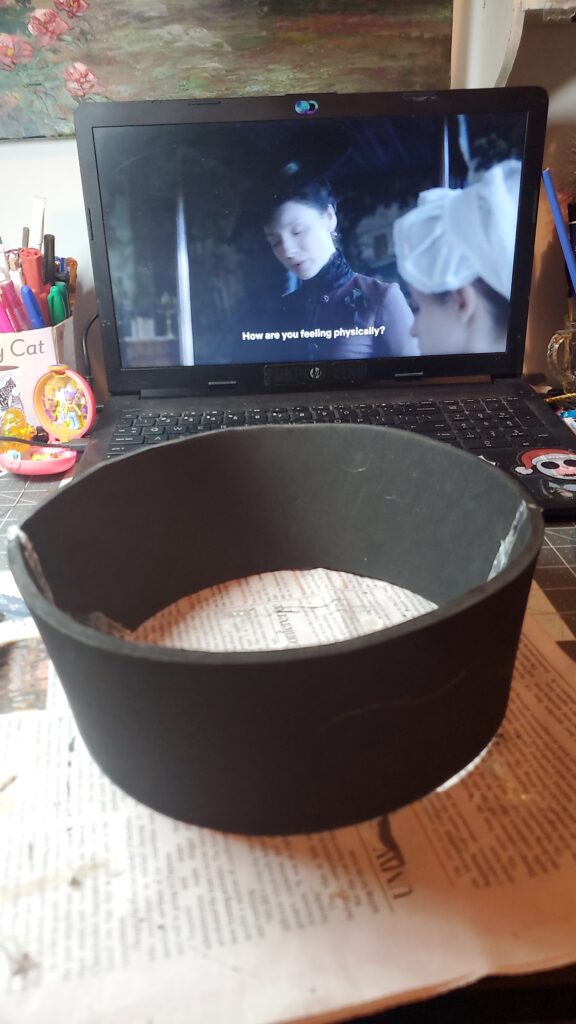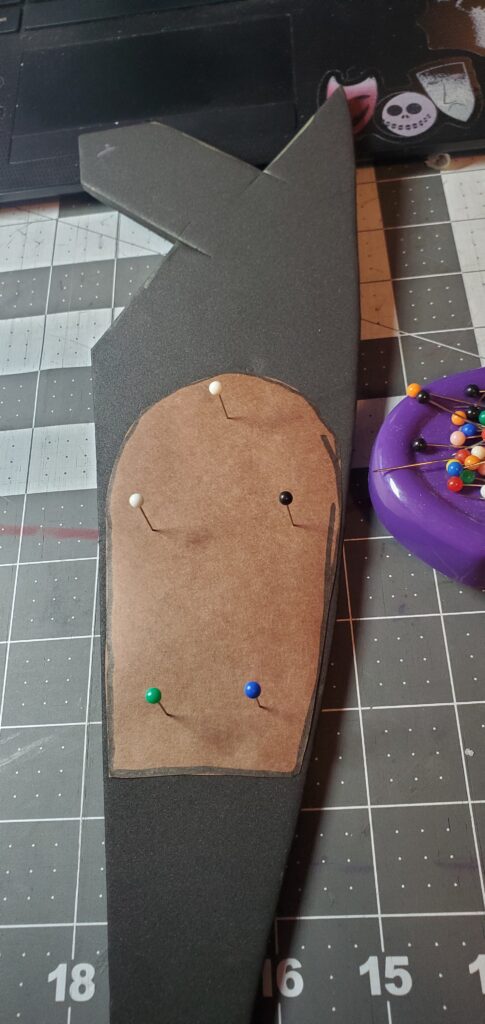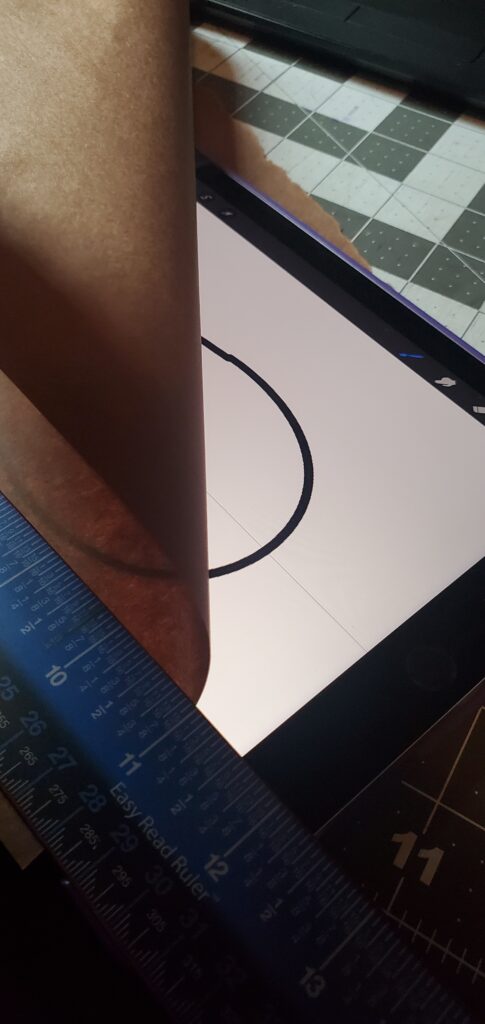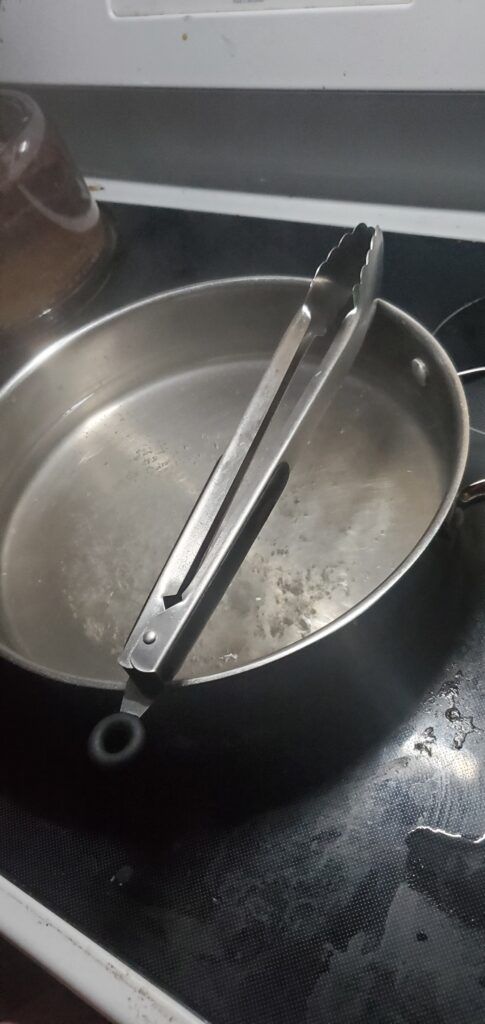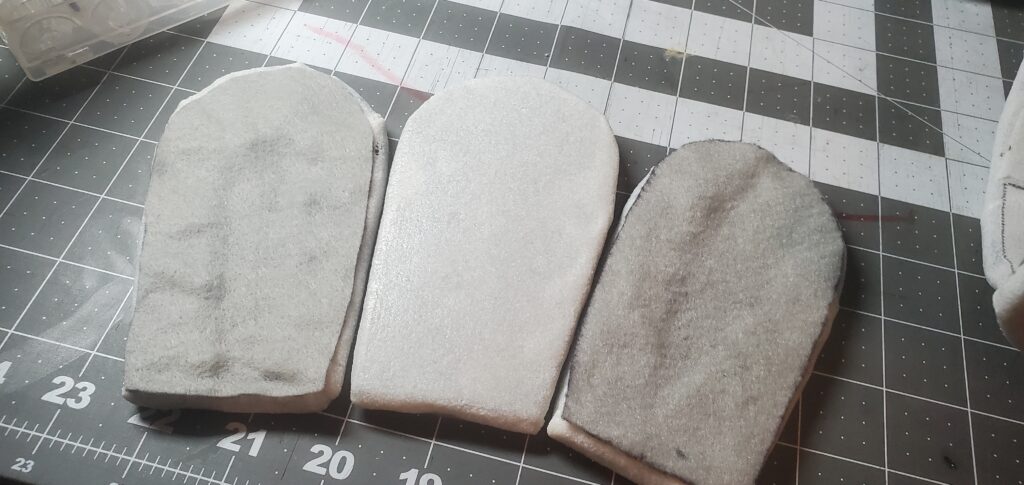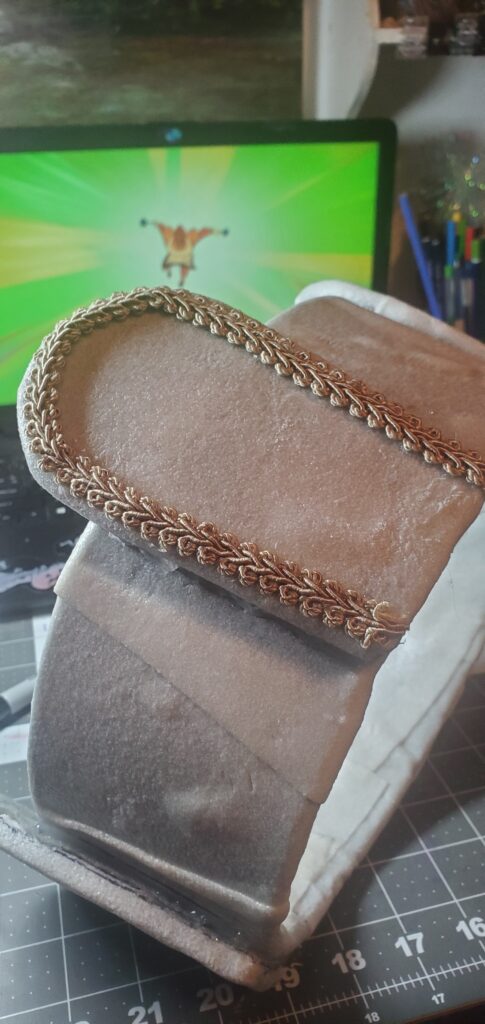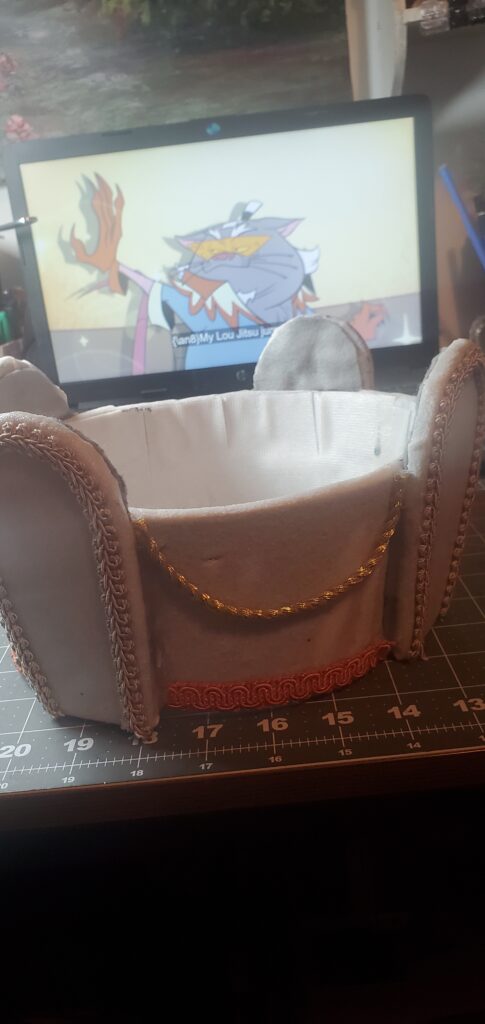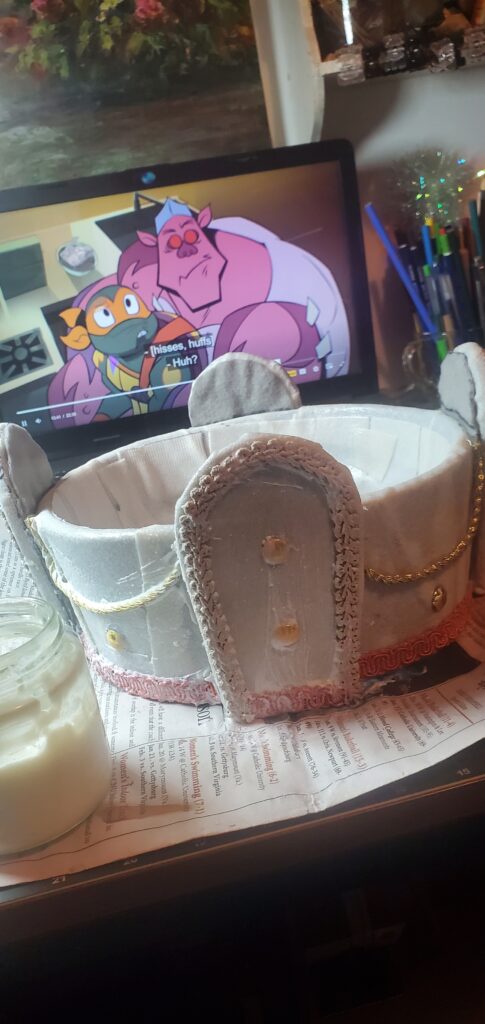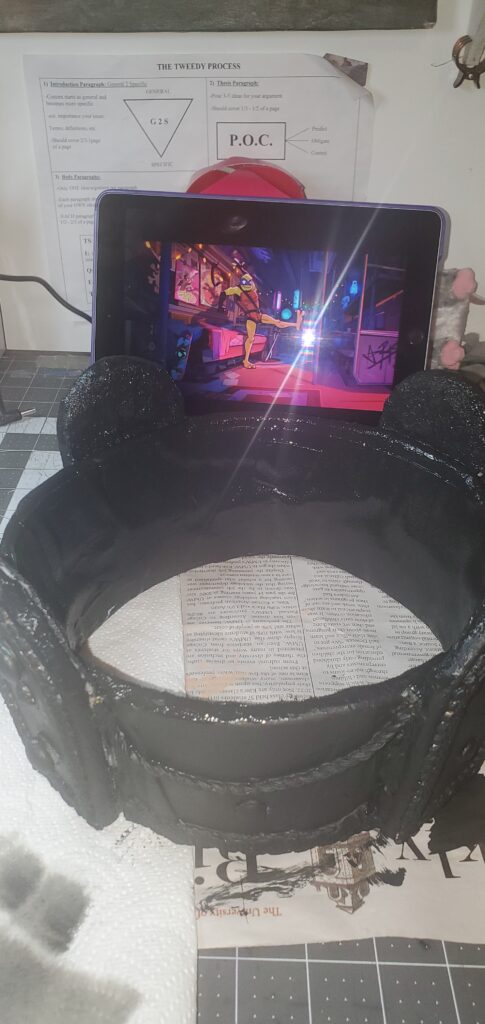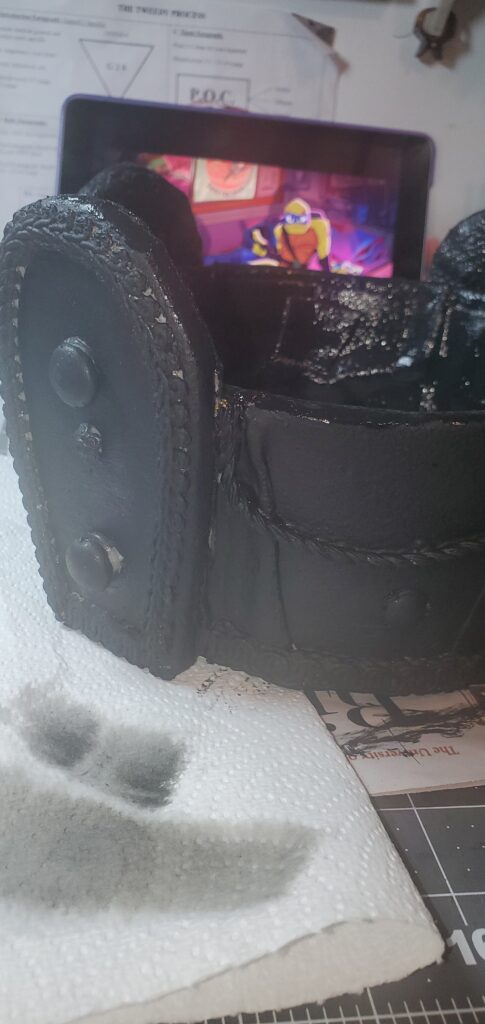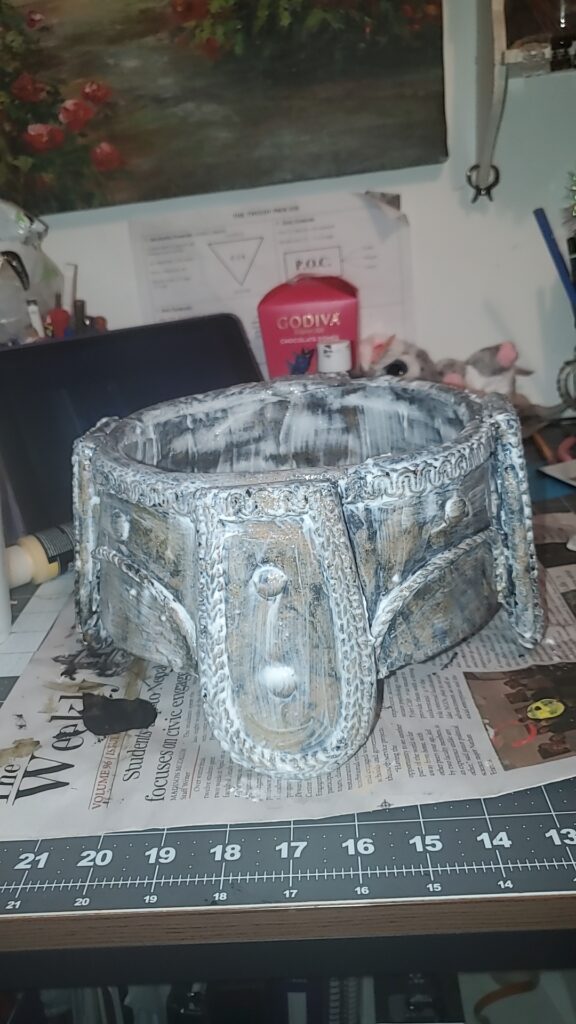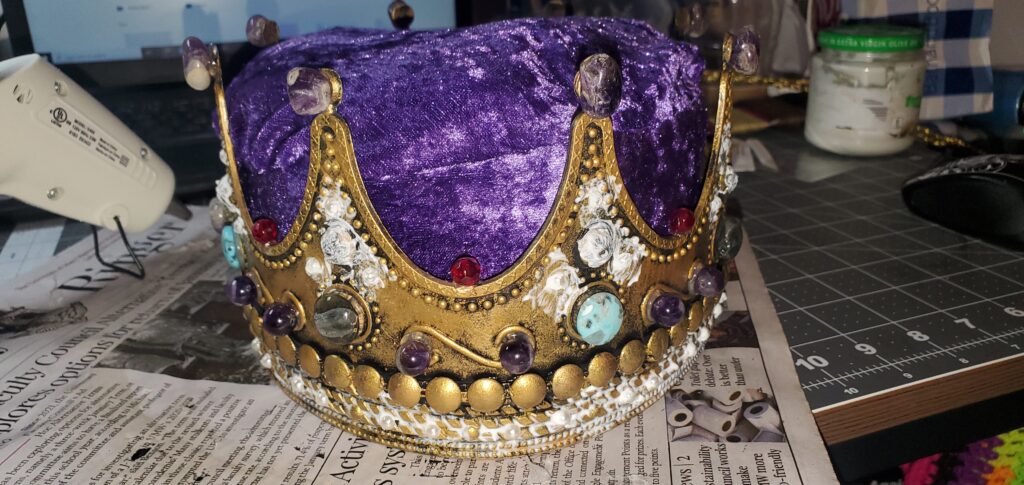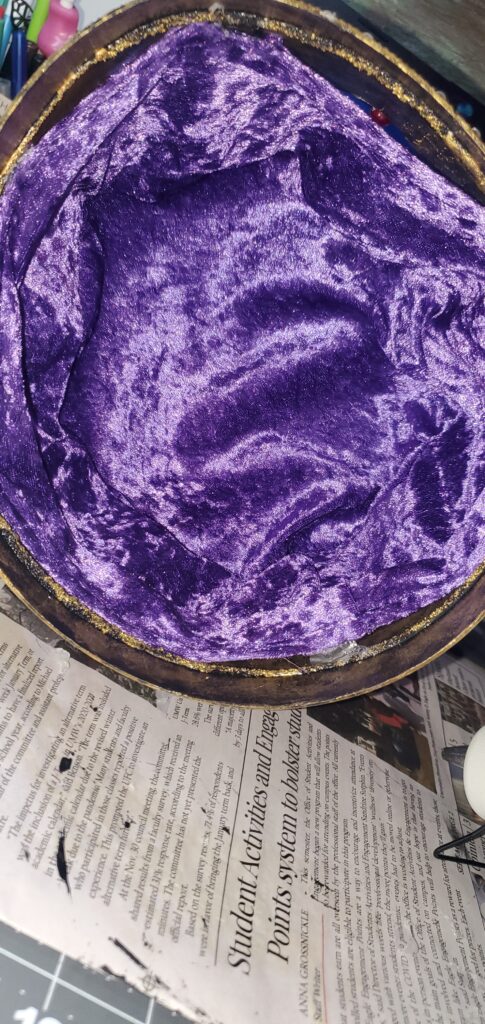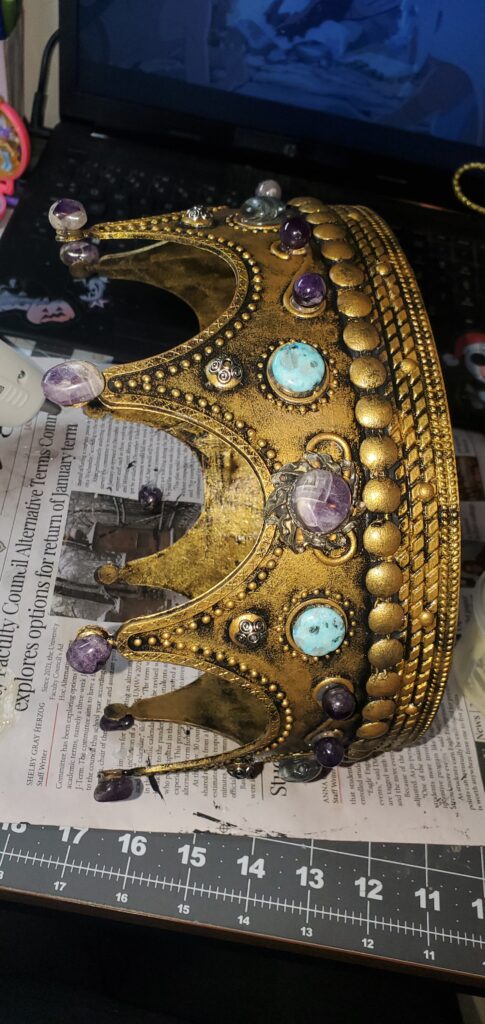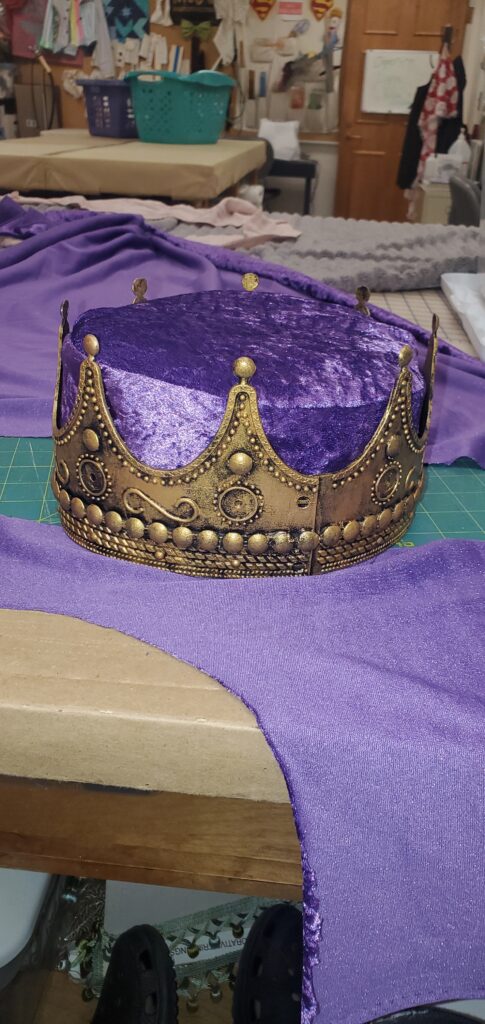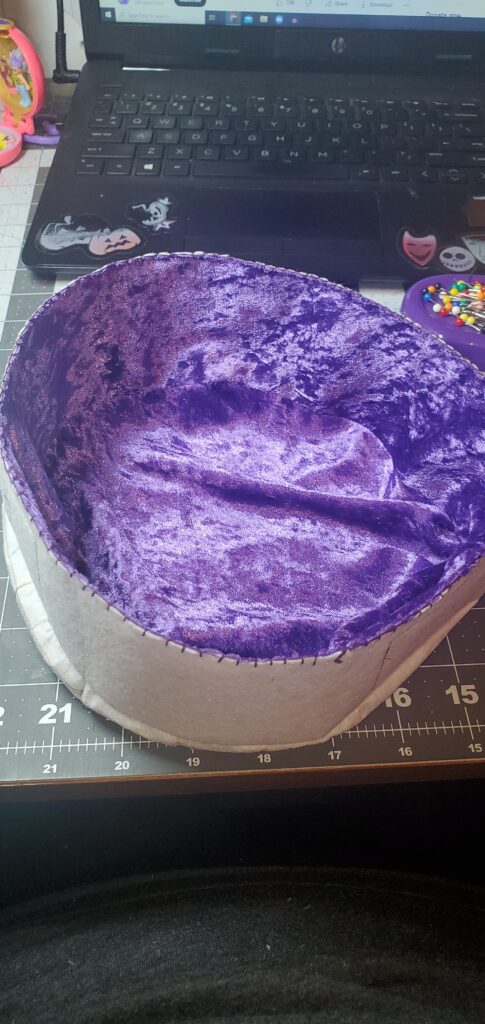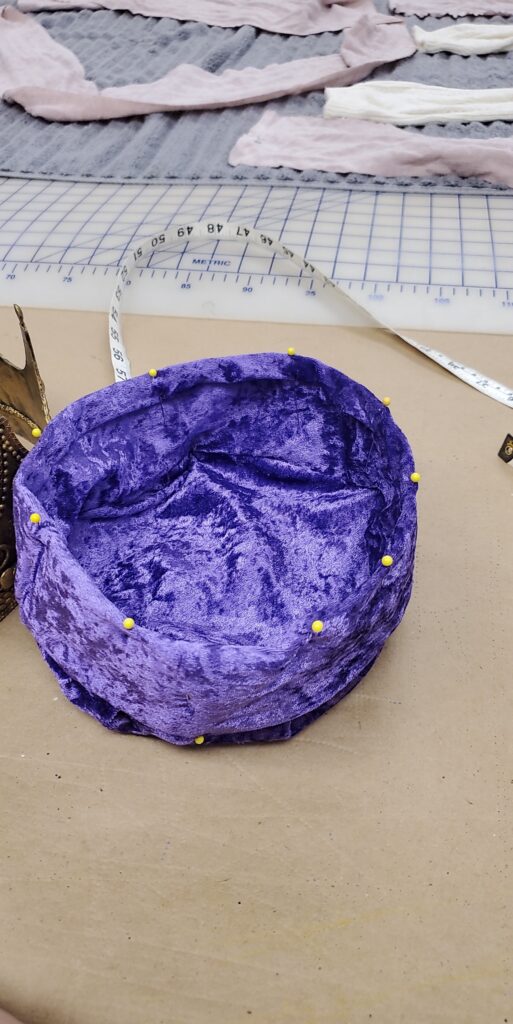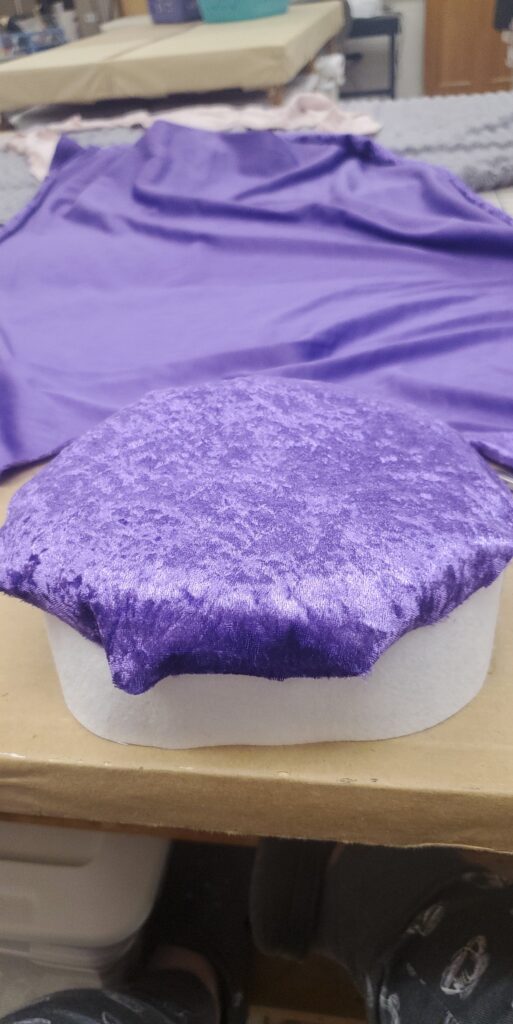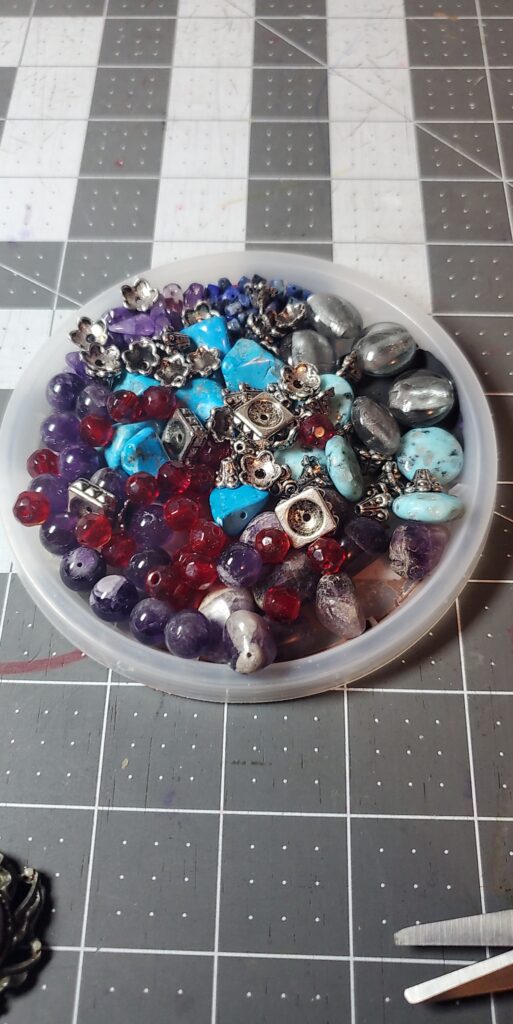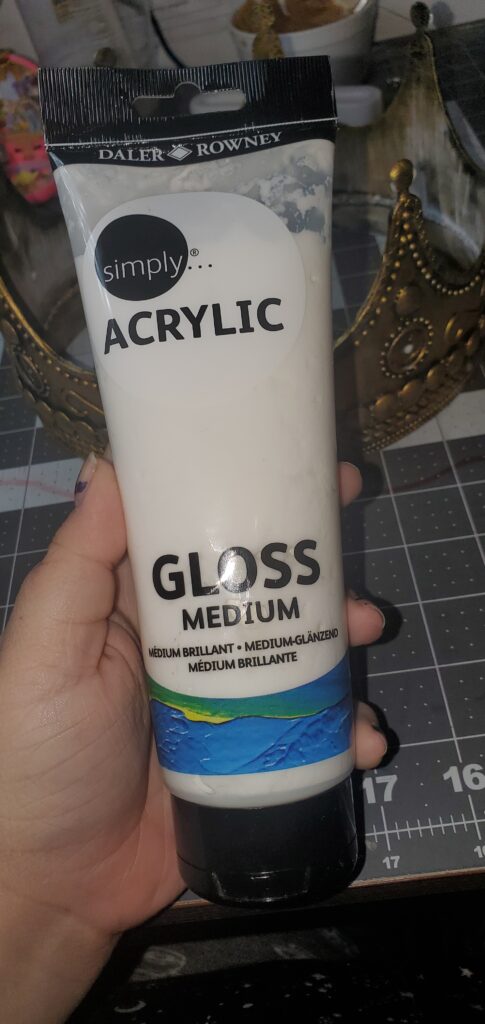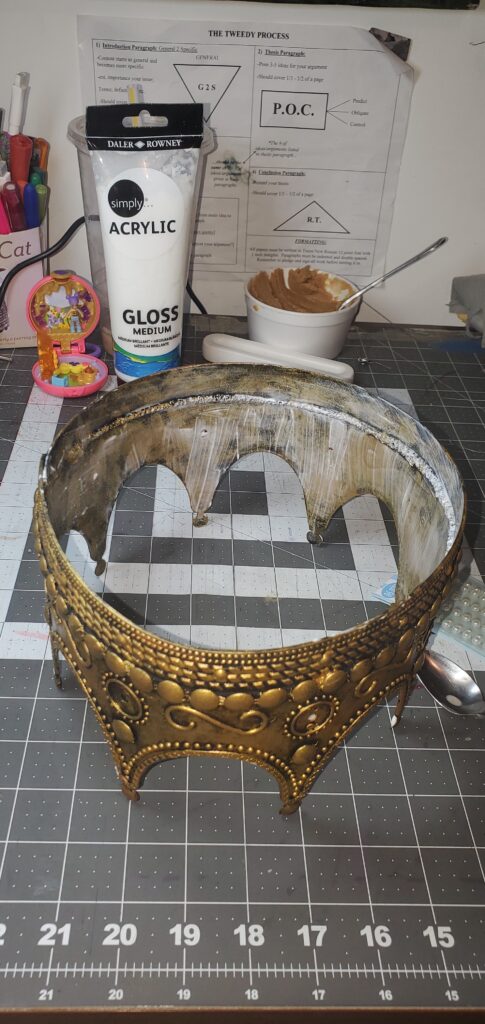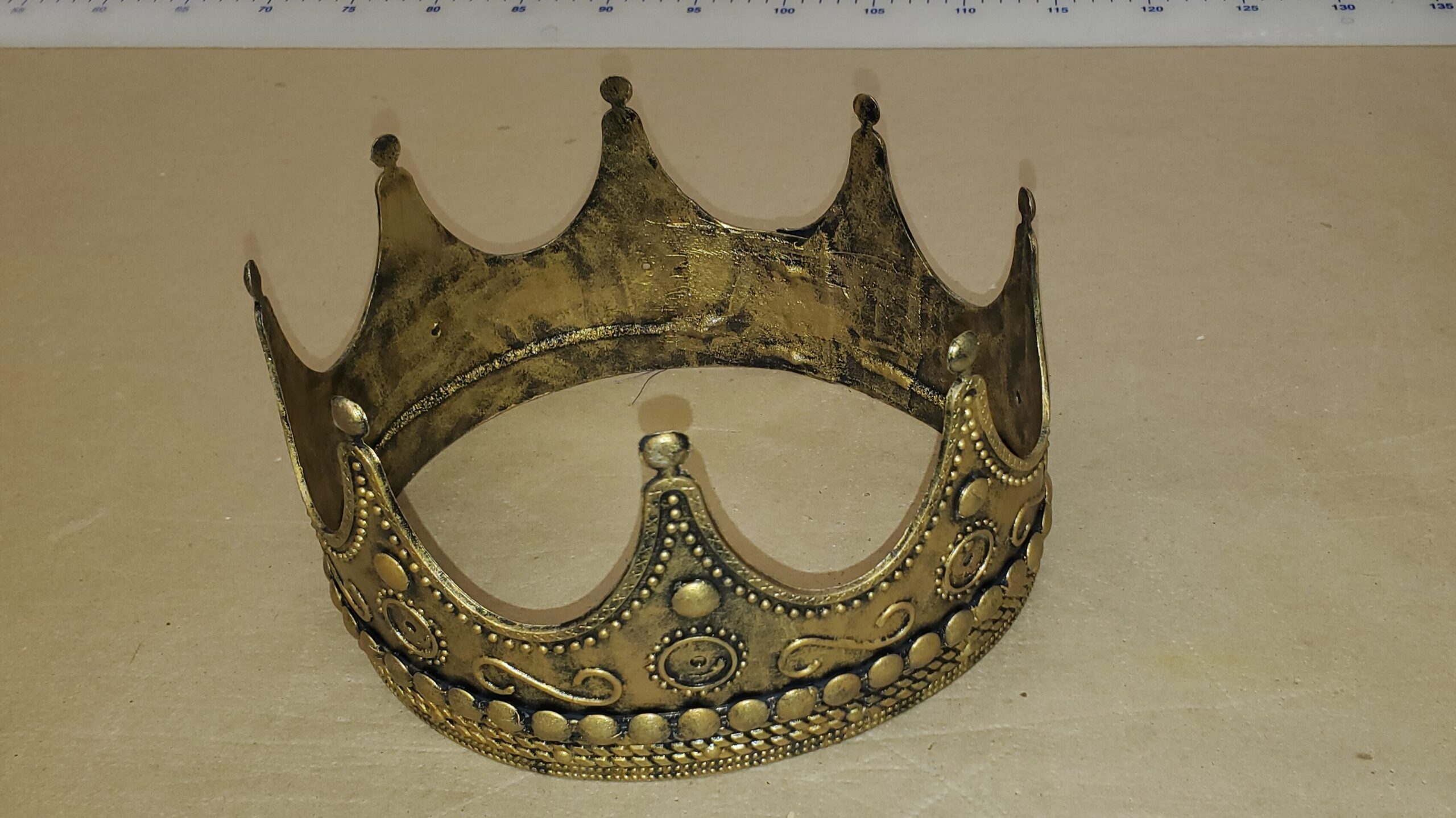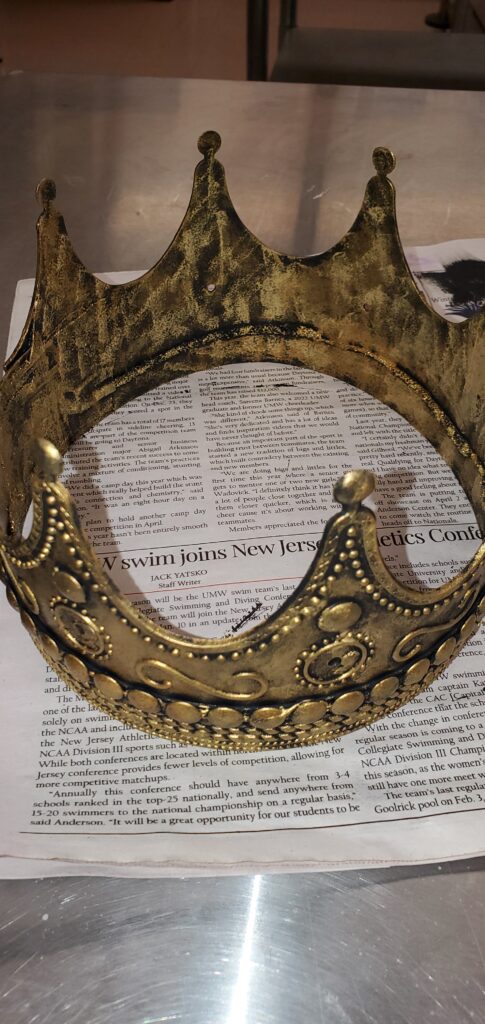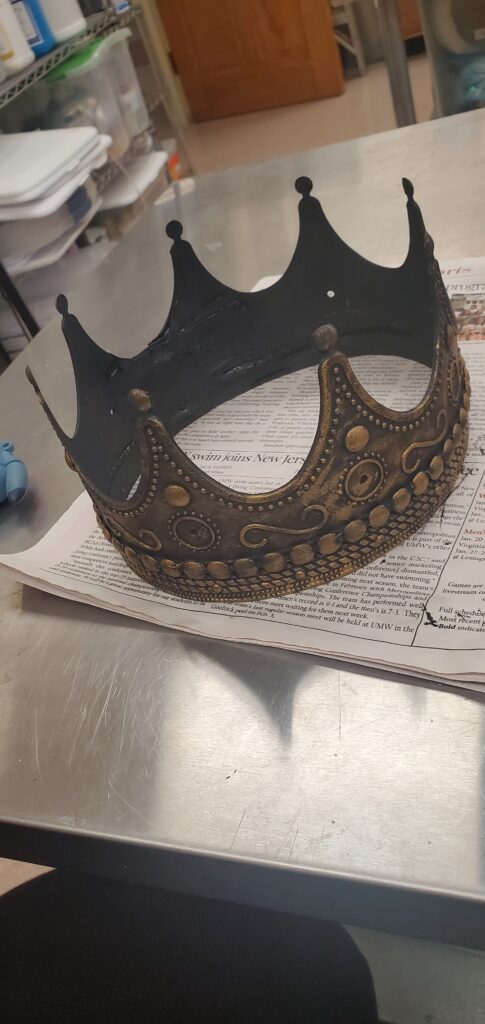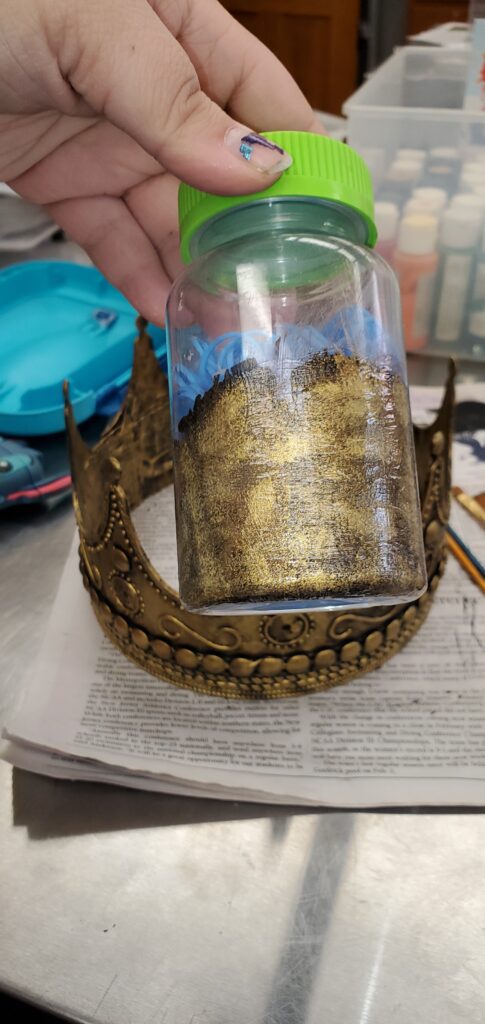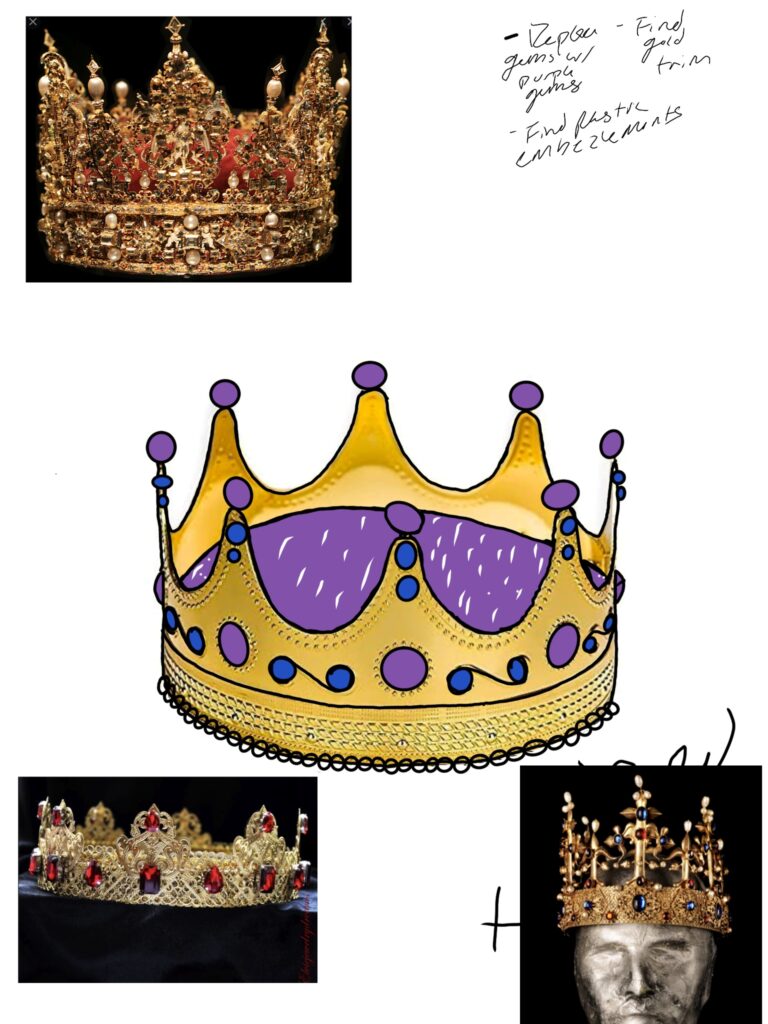Day One
I began researching shields and their correct size based on the images provided. I went with a Celtic-looking shield with some very beautiful knotwork. When looking up the sizes, typically most rounded shields, flat or otherwise are around 30″ to 36″ in diameter. So I began by measuring out a suitable diameter for my size, which was around 30″. I then took a string and created a perfect circle template for my shield. When I went home that evening I began cutting out two pieces of cardboard that would act as the foundation of the shield.

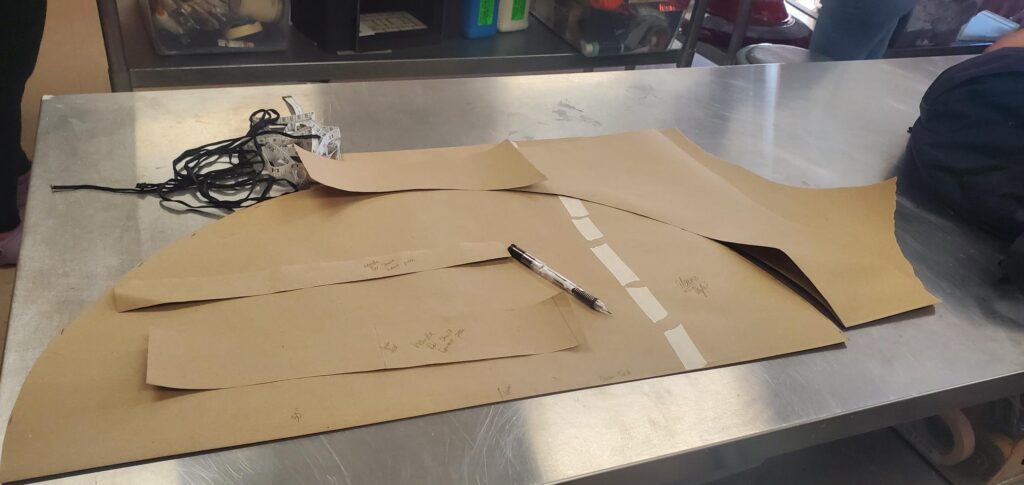
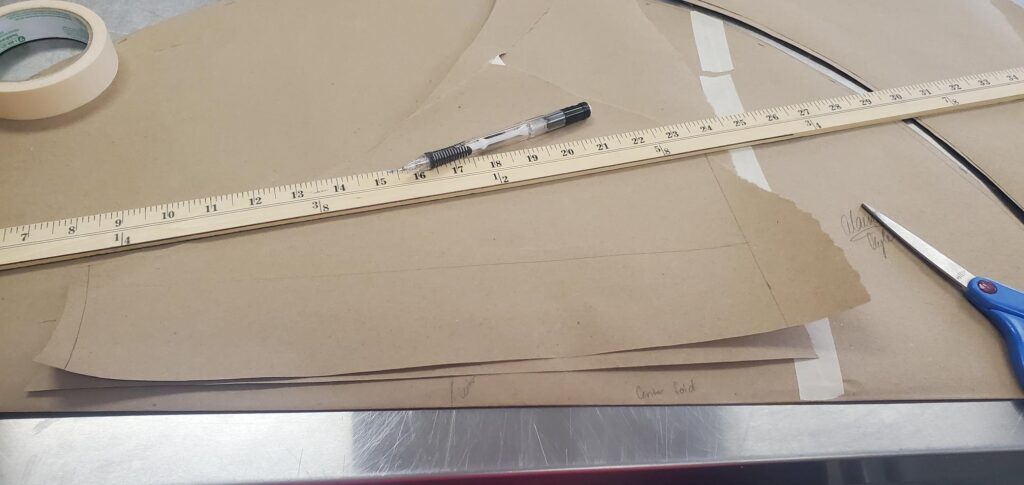
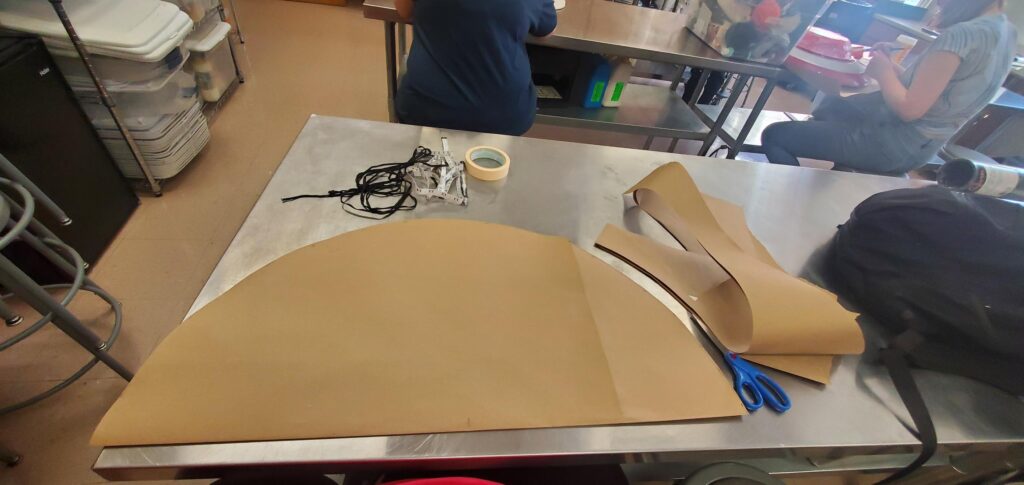
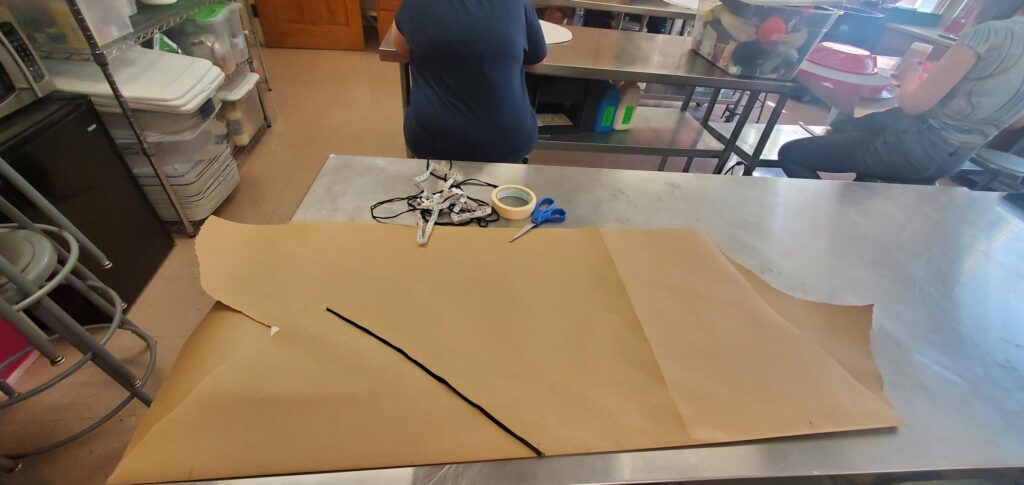
Day Two
I then glued two pieces of cardboard together, at first it was a bit tricky because I had included just a small enough curve to give it an illusion, but the hot glue would not stick, so I opted to use crazy glue. It worked. I took my Ipad and started tracing the Celtic knots. I discovered that I could trace them onto some foam and I put that down.
In class, I used the variform to mold a half circle for the center of my shield. It is lightweight and easy to use. When I got home I marked one-inch sections along the bottom for when I glue it to the main part of the shield. Then I began using sculpticoat and silver tissue paper to create a smooth surface. once that was dry I cut the one-inch tabs. Once that was done I painted both sides of the cardboard black, wanting a solid base to start planning out things. I then glued flat cardboard onto the edge of my shield for a nice clean finish.
https://drive.google.com/drive/folders/1VEWo2uEWmN0MM1hJOKvxwB34b6-tdPnL?usp=sharing
Day Three
I glued on a handle for the arm and the hand to hold on to. It was based on where I would place the four main knots. It was easy to guess where would be the most comfortable, and where I would get the most movement for it if I was on stage. I then glued the centerpiece on. Later I take it off because it is slightly off-center. On the centerpiece, I glue an inch of foam to make a spot for the chords to sit properly.
https://drive.google.com/drive/folders/10VEFiyEYq0G21tsF1PFw3K8SJUpNgkPU?usp=sharing
Day Four
I began cutting out more foam pieces for the knots as well as pieces for the middle marker. Once those were done I glued them down, being careful to refer to the original image. I then sculpticoated everything. Once that was dry I began painting, using colors as a way to make the foam look like metal. I layered the paint. Once that was dry I started adding more golden paint, making it shine brightly. Once that was dry I glued on the rope, painting it gold to match the rest. While that dried I began painting on the runes, careful to copy them exactly. When that dried, I flipped over the shield. I had been having issues with the handles staying on, so I used a combination of superglue, hot glue, and duck tape to secure the straps. then I sculpticated it so that once it dried there was no way that it would ever come off. I also paper-matched the handles to look like leather, using techniques that we had used in previous projects. When that dried I sealed it with the last bit of sculpticoat I had.
https://drive.google.com/drive/folders/18jn5xl5VKdu7MxQArSaJB89jo2vvo4f_?usp=sharing
I enjoyed this semester and learning about new ways to complete things. I also enjoyed working with various forms of thermoplastics. My favorite thermoplastic would have to be viraform. I feel like I have a lot more to learn about it. I also love scultpicoat. It is so cool that it turns into plastic when dry.
